Frank Lloyd Wright
Taliesin West
1937–1959
Taliesin West was architect Frank Lloyd Wright‘s winter home and school in the desert from 1937 until his death in 1959 at the age of 91. Wright and the Taliesin Fellowship began to “trek” to Arizona each winter in 1935. In 1937 Wright purchased the plot of desert land that would soon become Taliesin West. He paid “$3.50 an acre on a southern slope of the McDowell Range overlooking Paradise Valley outside Scottsdale.”
Wright believed this to be the perfect spot for such a building: a place of residence, a place of business and a place to learn. Wright described it like this, “Finally I learned of a site twenty-six miles from Phoenix, across the desert of the vast Paradise Valley. On up to a great mesa in the mountains. On the mesa just below McDowell Peak we stopped, turned, and looked around. The top of the world.”
An investment of over $10,000 was needed, to dig a well deep enough to provide sufficient water for the campus. When Wright and his family arrived they found Native American petroglyphs among the rocks. One, seen today at the beginning of the guided tour, shows what may be hands clasping. Wright stylized the figures into interconnected lines, which became the symbol of Taliesin West.
Wright felt very strongly about the connection to the desert. He said: “Arizona needs its own architecture… Arizona’s long, low, sweeping lines, uptilting planes. Surface patterned after such abstraction in line and color as find ‘realism’ in the patterns of the rattlesnake, the Gila monster, and the saguaro, cholla or staghorn – or is it the other way around—are inspiration enough.”
The structure’s walls are made of local desert rocks, stacked within wood forms, filled with concrete - colloquially referred to as “desert masonry”. Wright always favored using the materials readily available rather than those that must be transported to the site. In Wright’s own words: “There were simple characteristic silhouettes to go by, tremendous drifts and heaps of sunburned desert rocks were nearby to be used. We got it all together with the landscape…” The flat surfaces of the rocks were placed outward facing and large boulders filled the interior space so concrete could be conserved.
Natural light also played a major part in the design. In the drafting room, Wright used translucent canvas to act as a roof (later replaced by plastic because of the intense wear from the Arizona sun). In the south-facing dining room, Wright did not take the masonry walls from floor to ceiling, and designed the roof to hang past the walls preventing unwanted sun rays from penetrating but allowing for horizontal light to pass through the room. Wright believed natural light aided the work environment he had his apprentices in, keeping the inside of his building in touch with the natural surroundings.
Every part of Taliesin West bears Frank Lloyd Wright’s personal touch. Upon every return after a summer in Wisconsin Wright would grab a hammer and immediately make his way through the complex. He would walk through each room making changes or shouting orders to apprentices closely following with wheelbarrows and tools. He constantly changed and improved on his design fixing arising problems and addressing new situations. Throughout the years he enlarged the dining room, as well as added the cabaret theatre, music pavilion and numerous other rooms. All of the furniture and decorations were designed by Wright and the majority built by apprentices. A brilliant aspect of Wright’s design is the cabaret theatre. Built with six sides, out of the standard rock-concrete mixture, in an irregularly hexagonal shape, the theatre provides its occupants with what someone has called “95% acoustic perfection”. Someone sitting in the back row can hear the lightest whisper from a speaker on stage.
During his lifetime, Wright continually altered and added to the complex of buildings, all of which were constructed by students. Many of Wright’s most famous buildings were designed in the drafting room at Taliesin West, including the Guggenheim Museum in New York City and Grady Gammage Auditorium at Arizona State University in Tempe.
Taliesin West continues as the headquarters of The Frank Lloyd Wright Foundation and as the winter home for the School of Architecture at Taliesin. As in Wright’s time, students and faculty spend the summers in Spring Green, Wisconsin. The School of Architecture at Taliesin offers an accredited Master of Architecture (M.Arch) degree focused on Wright’s principles. The structure was added to the National Register of Historic Places on February 12, 1974, and was designated as a National Historic Landmark on May 20, 1982.

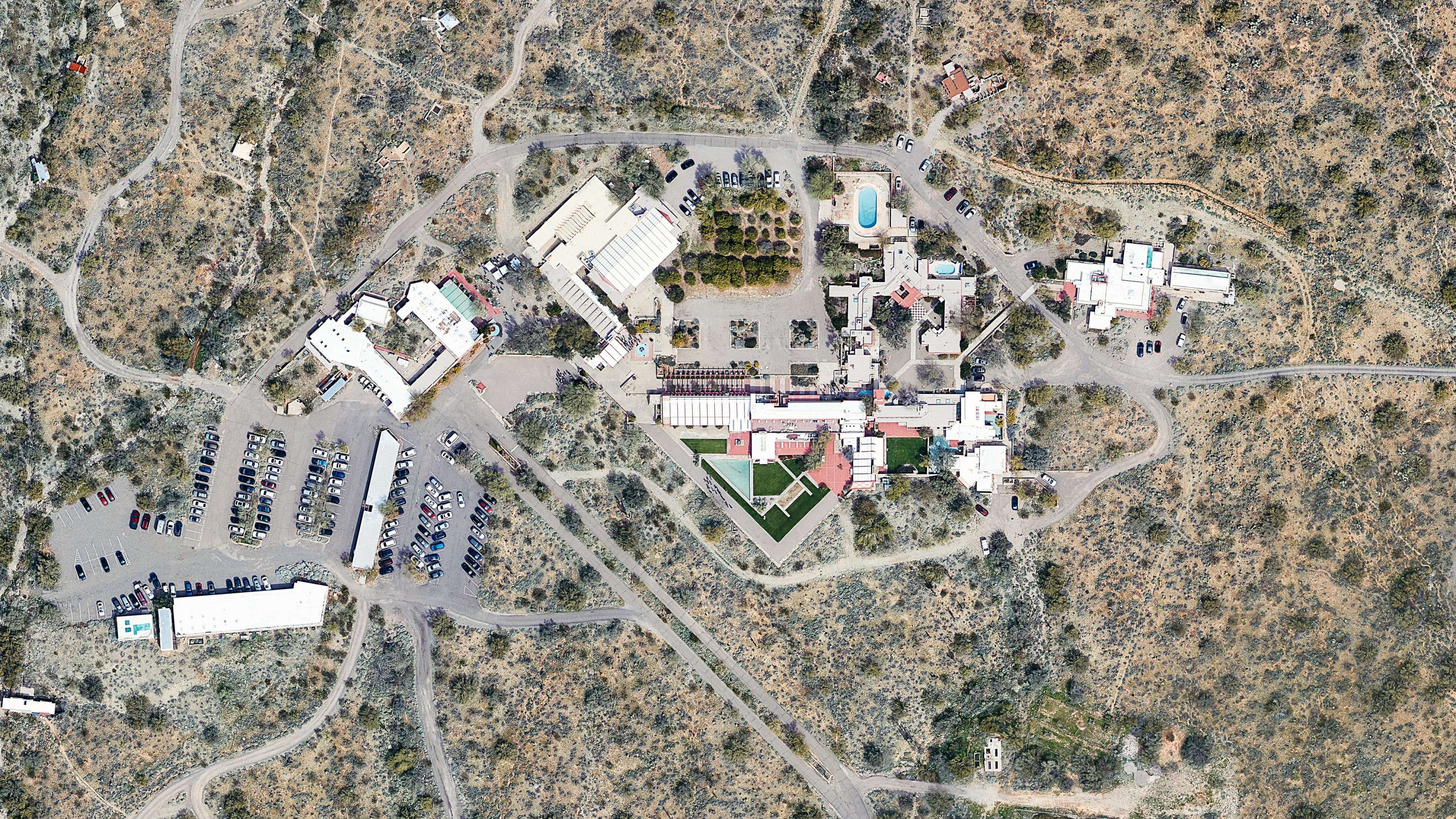
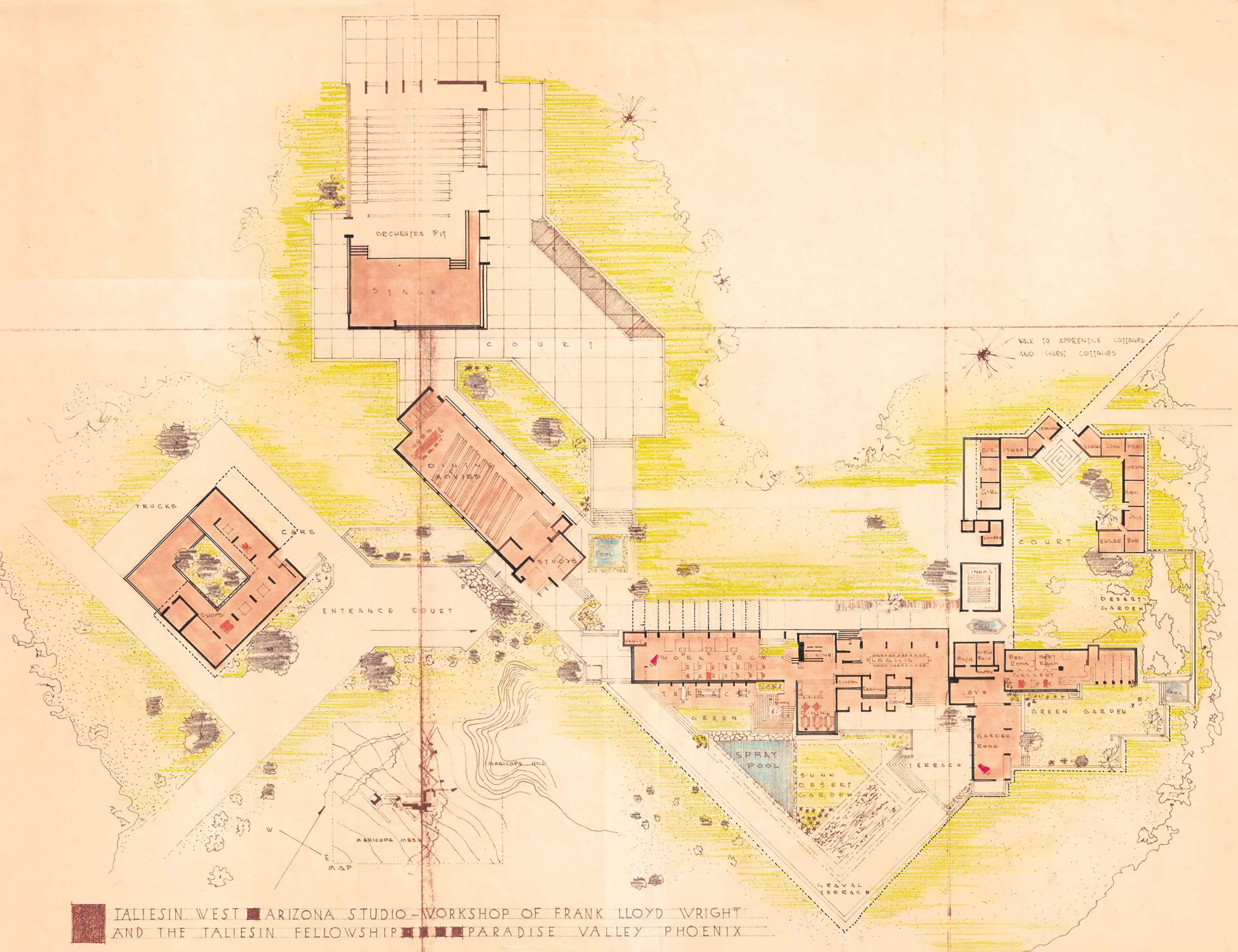
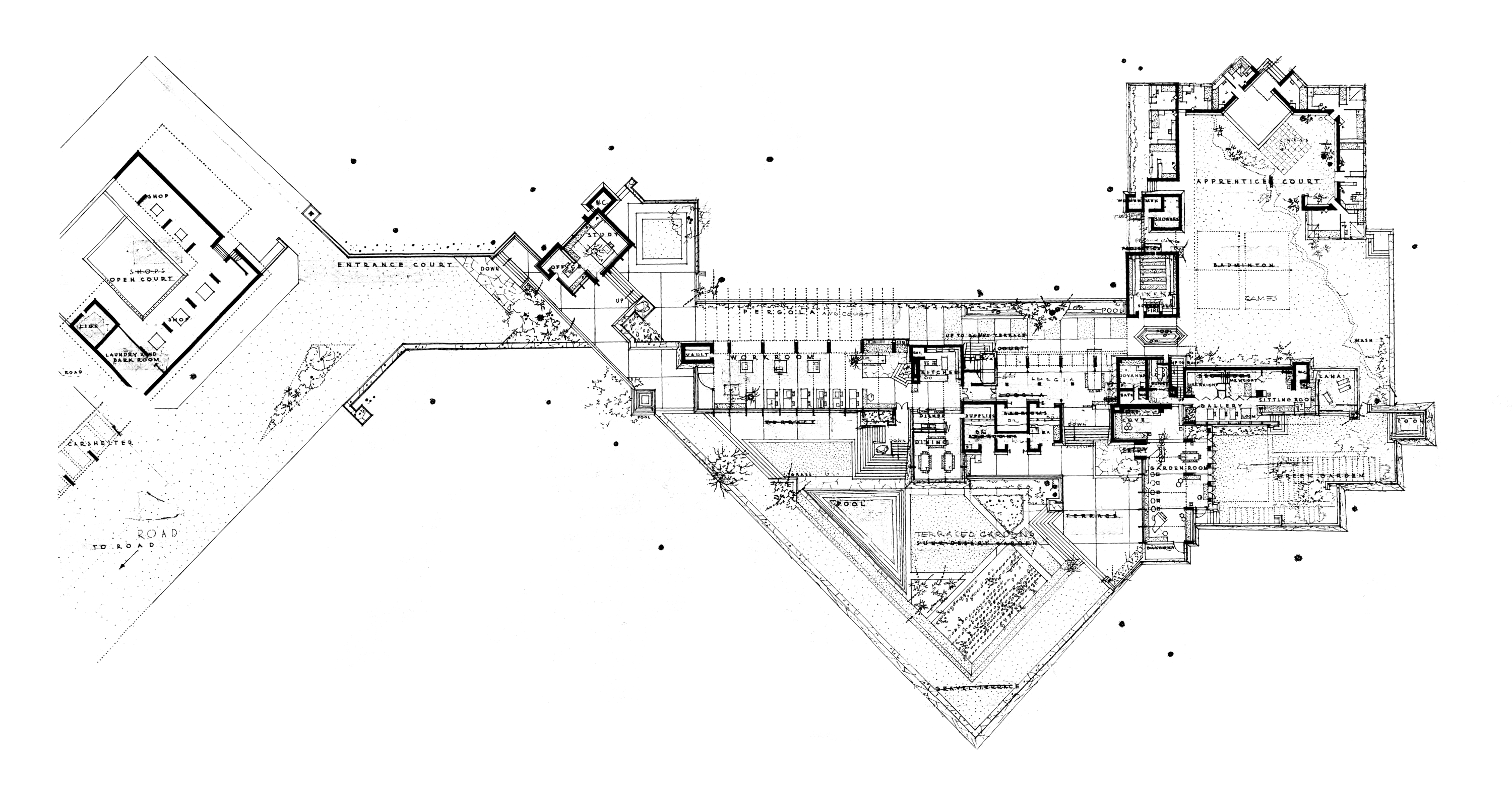
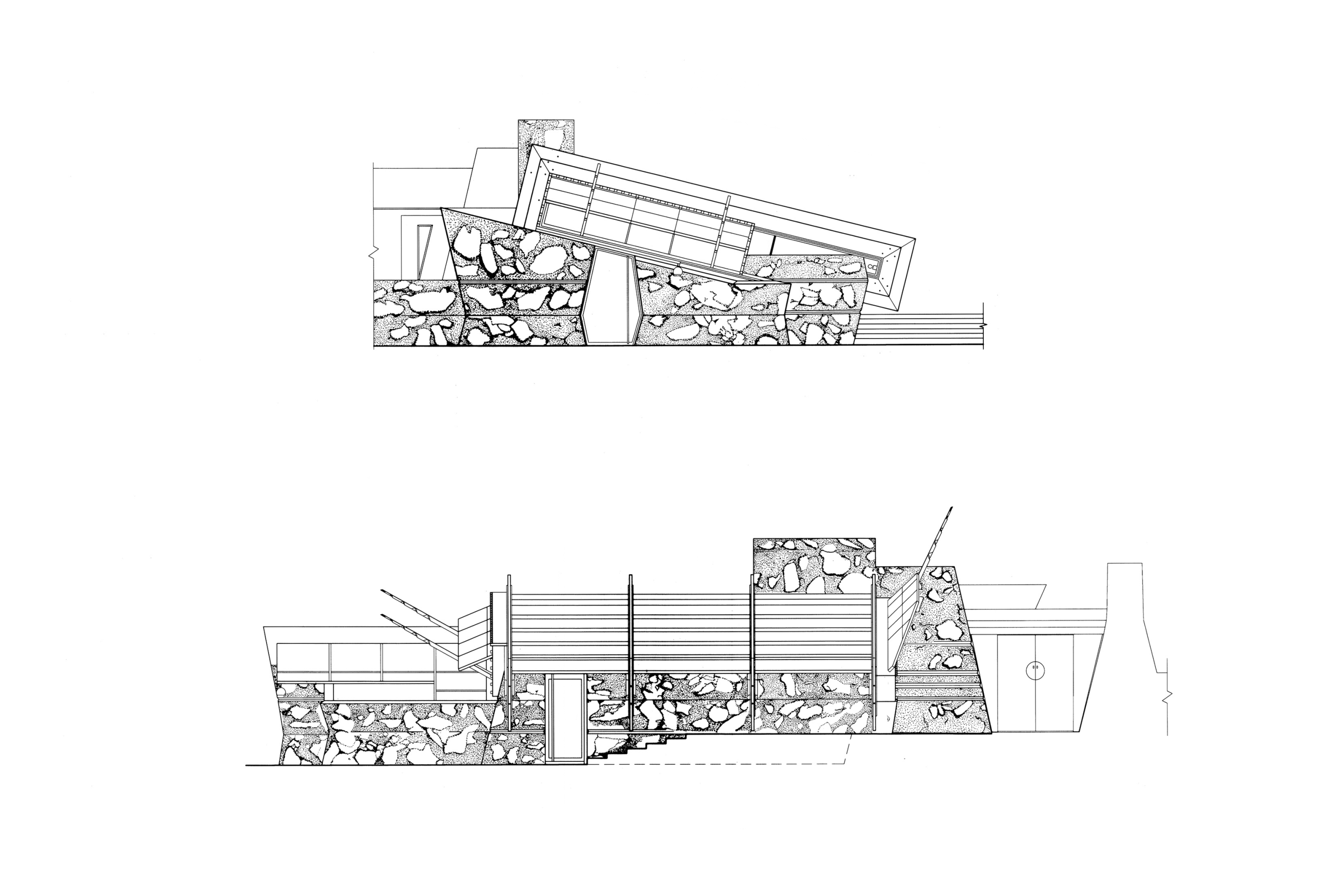
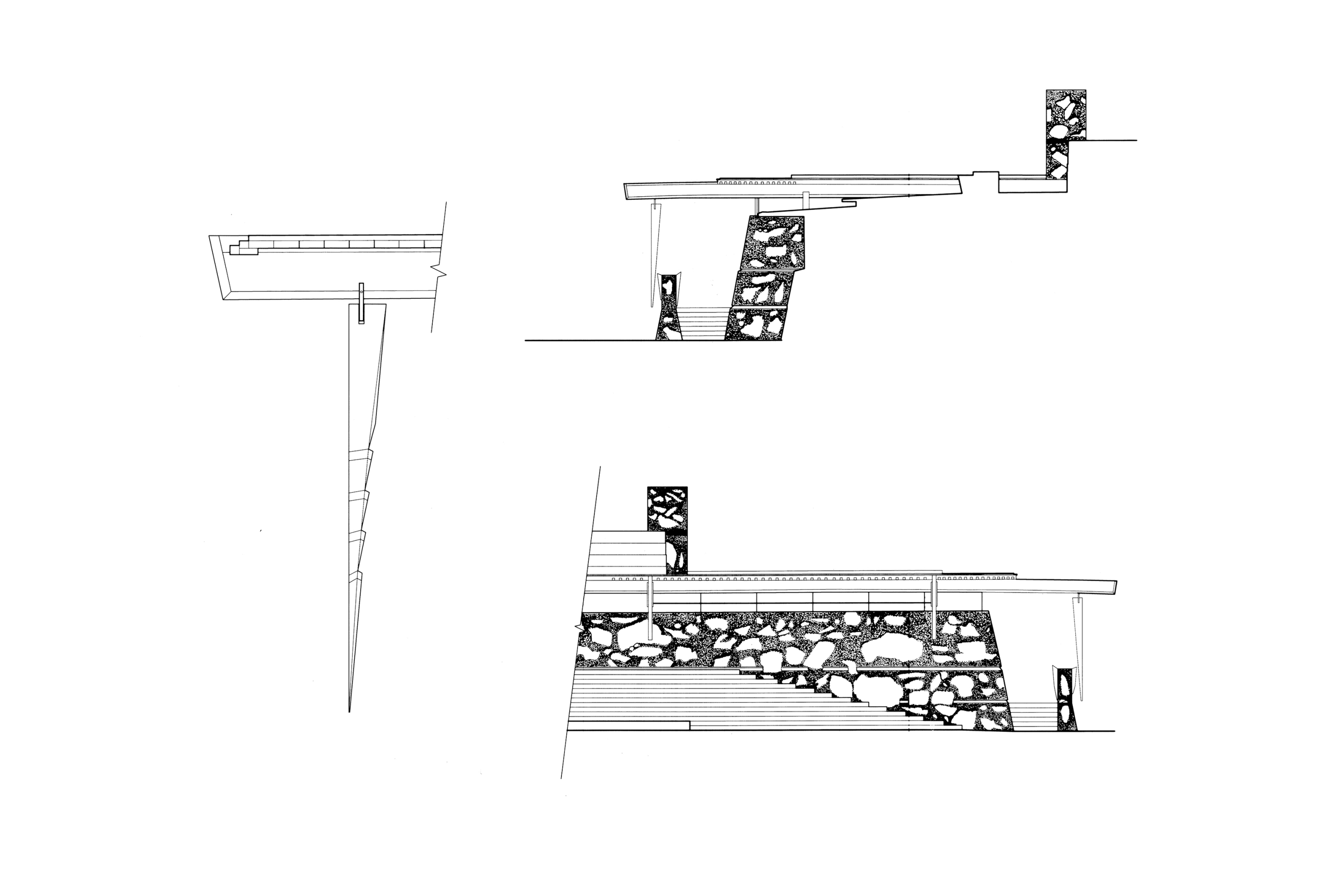
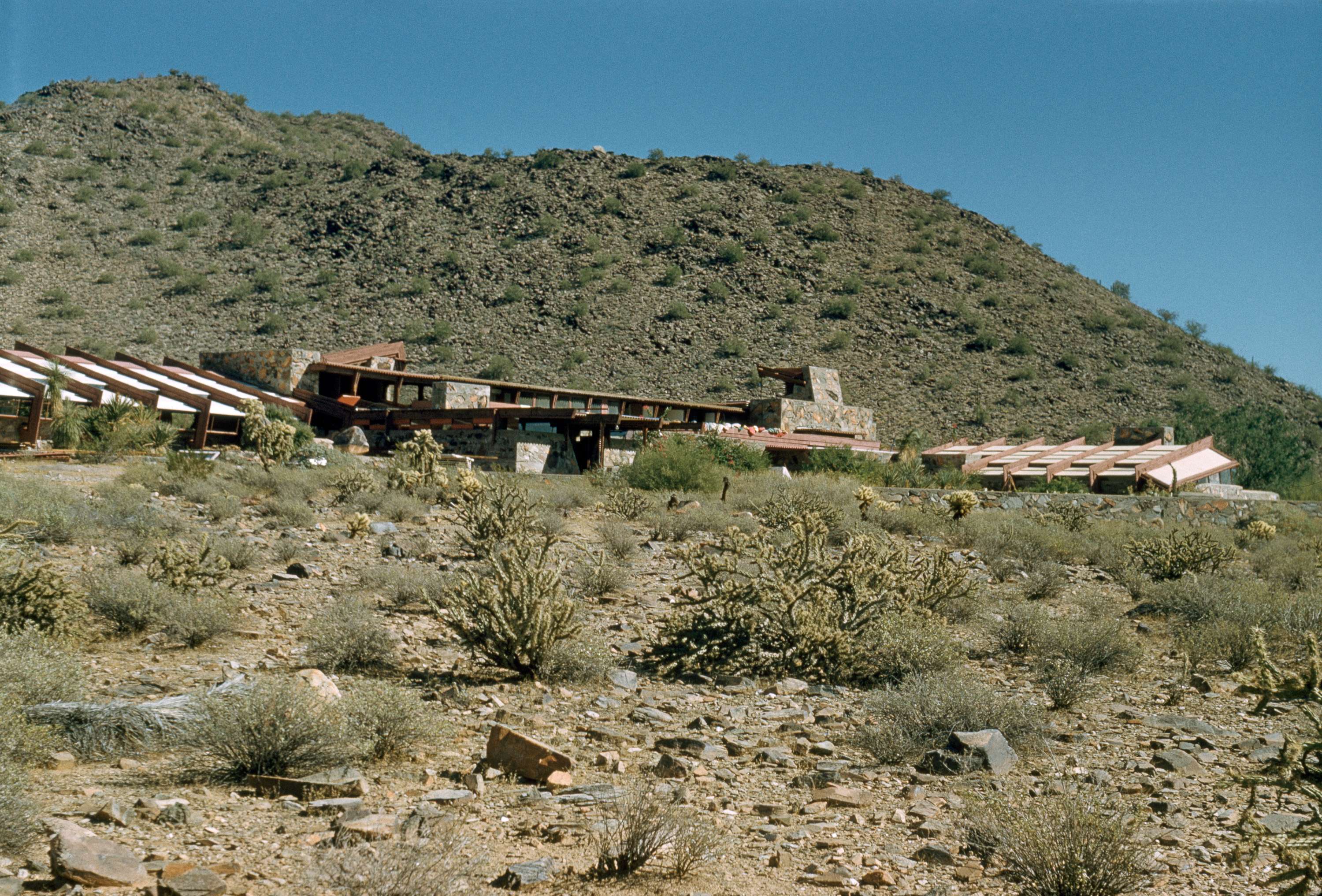
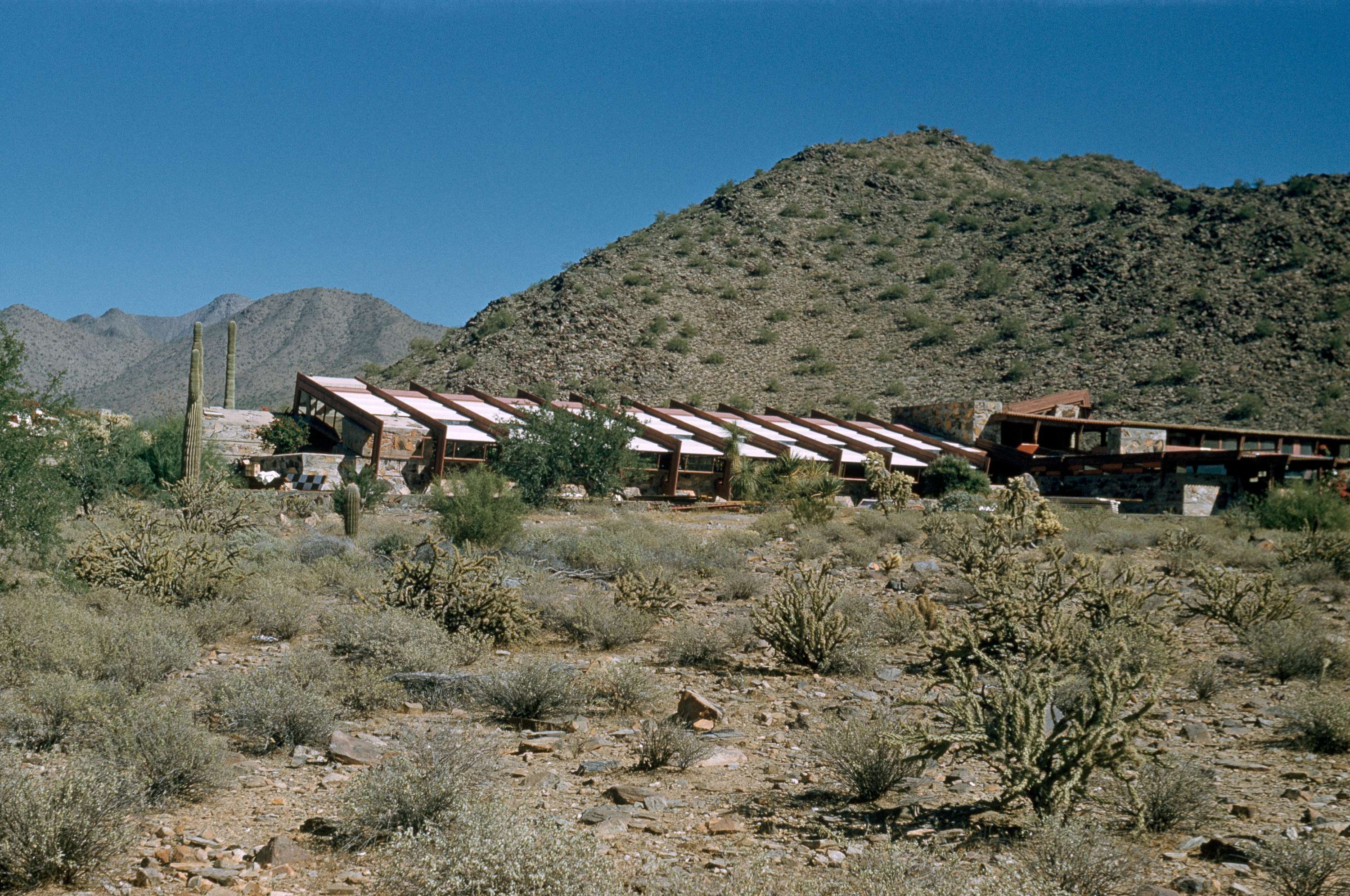
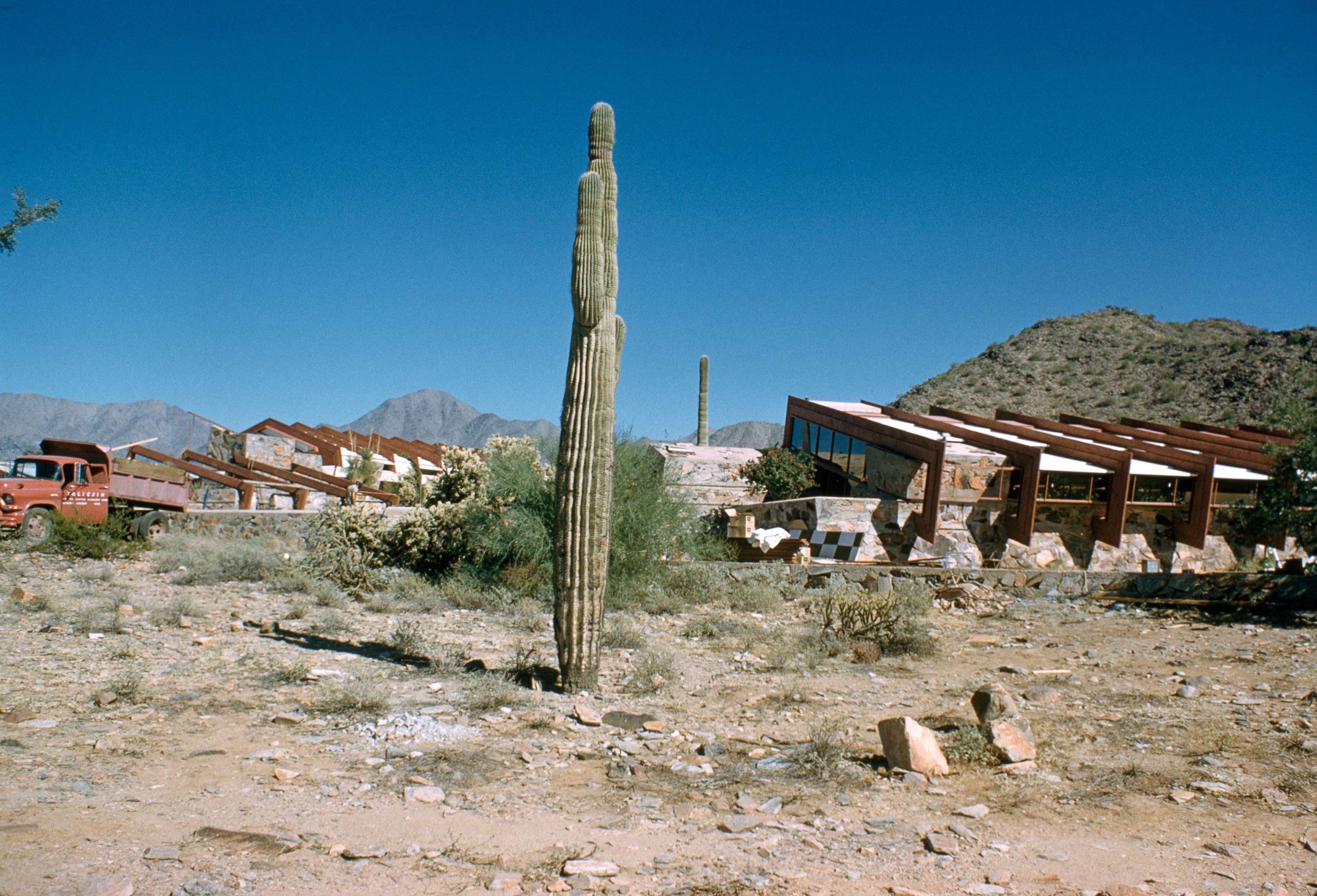
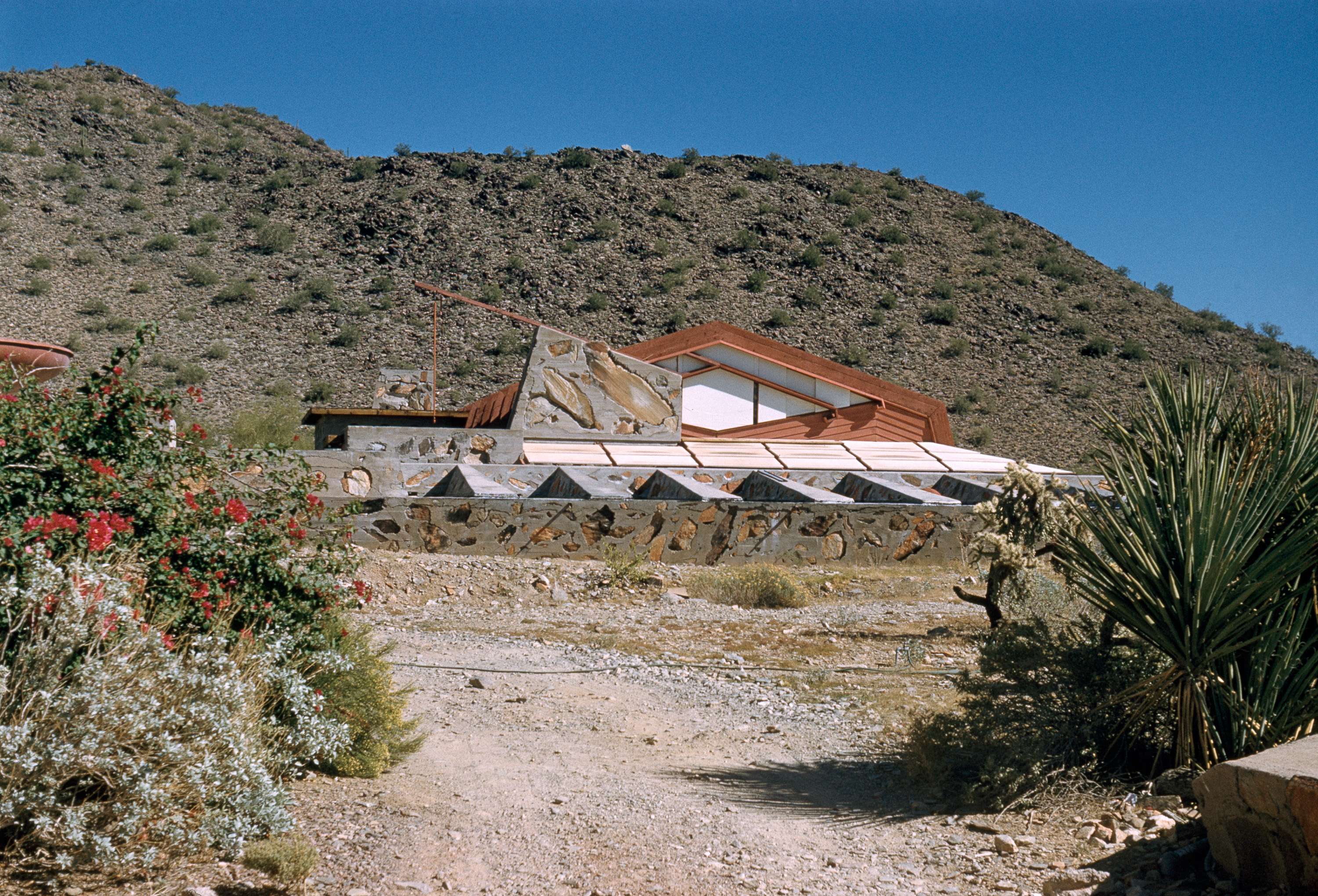
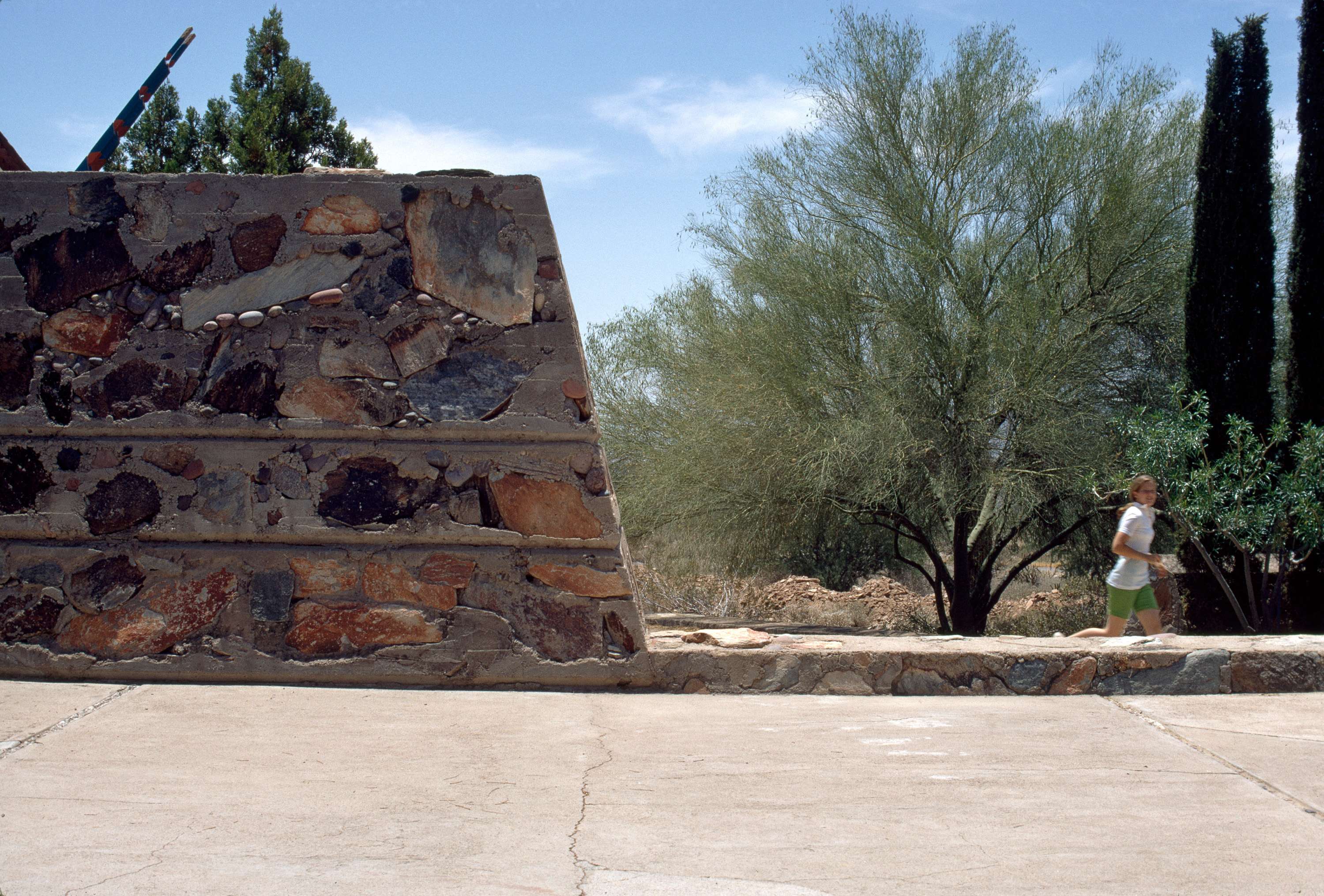
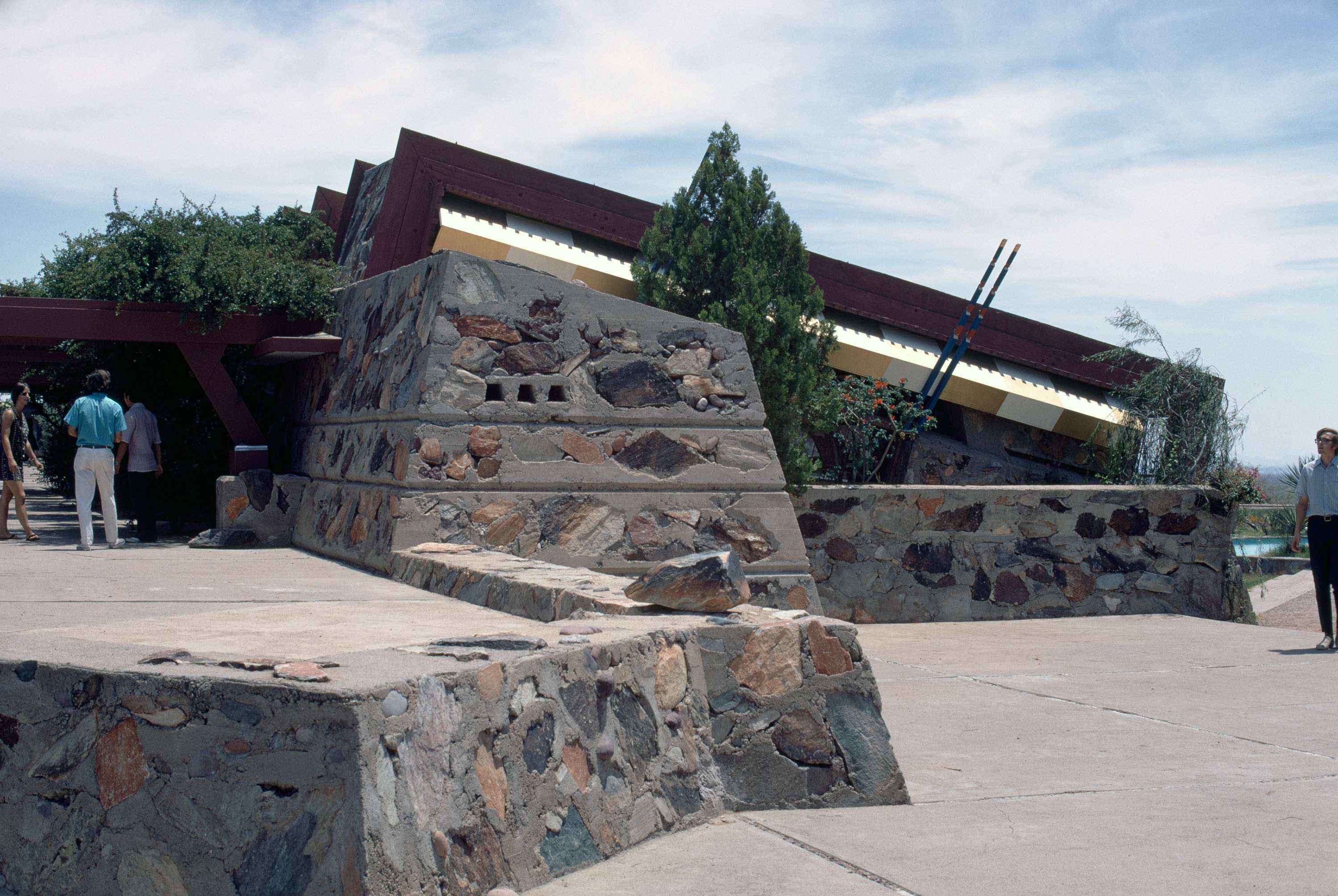
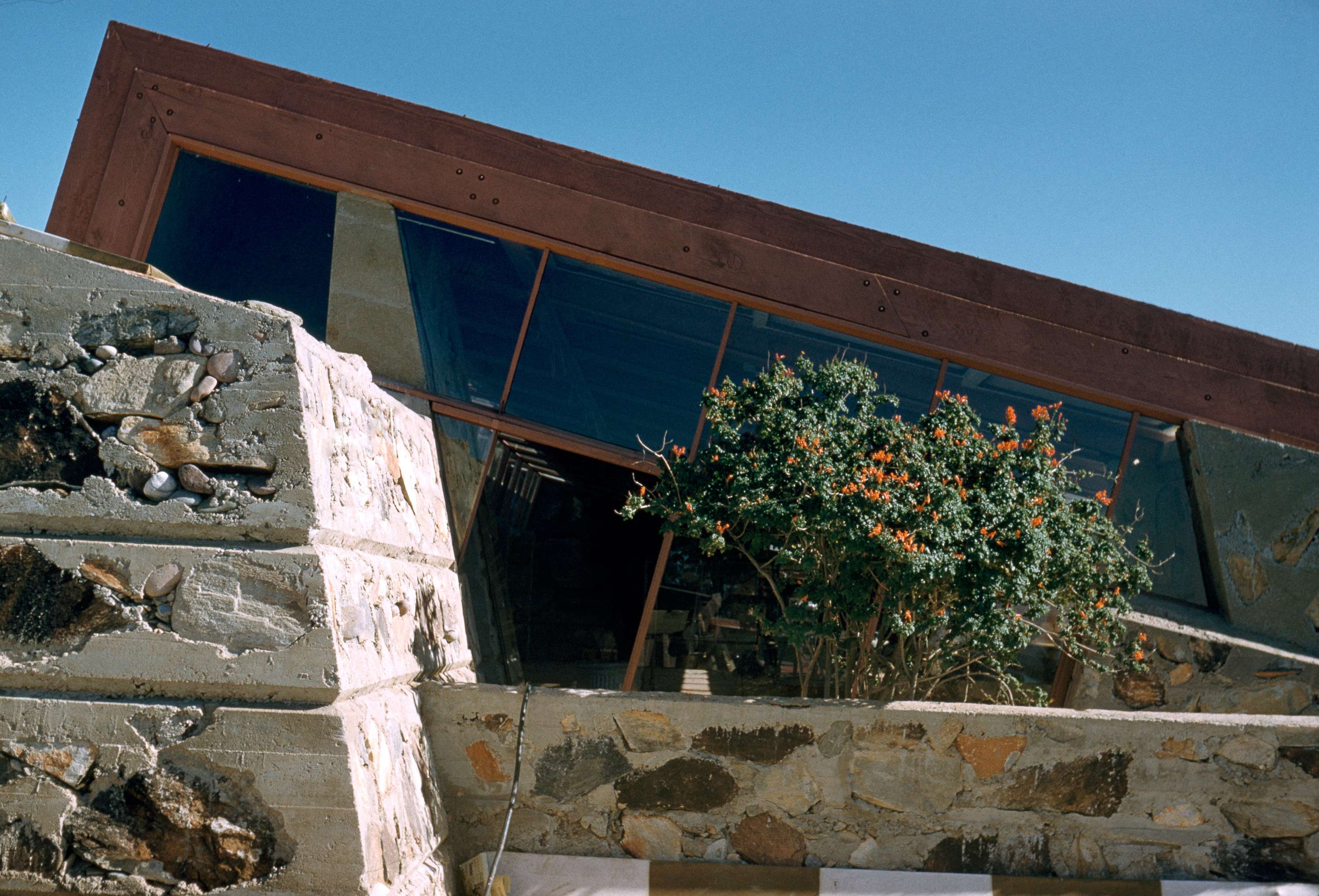
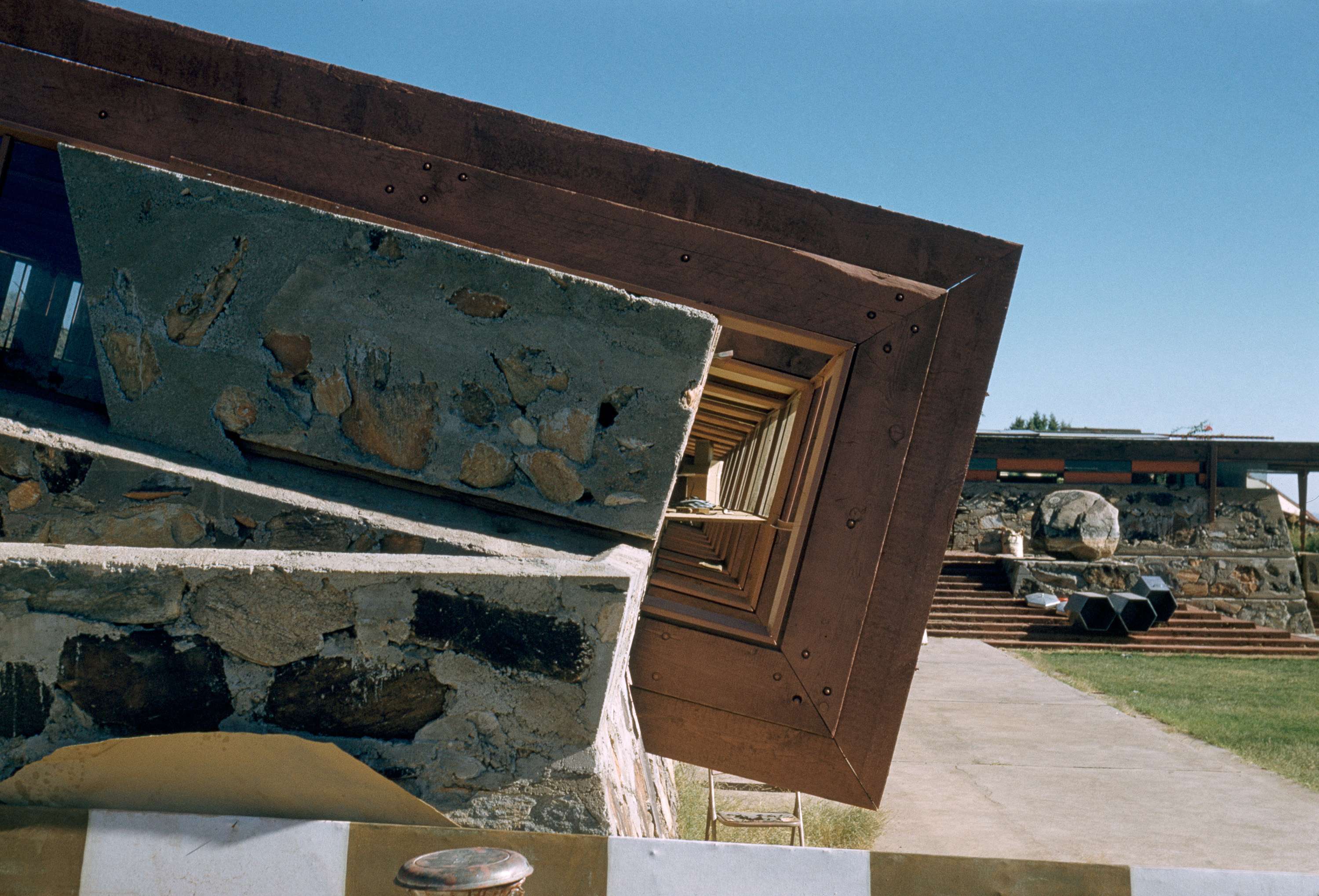
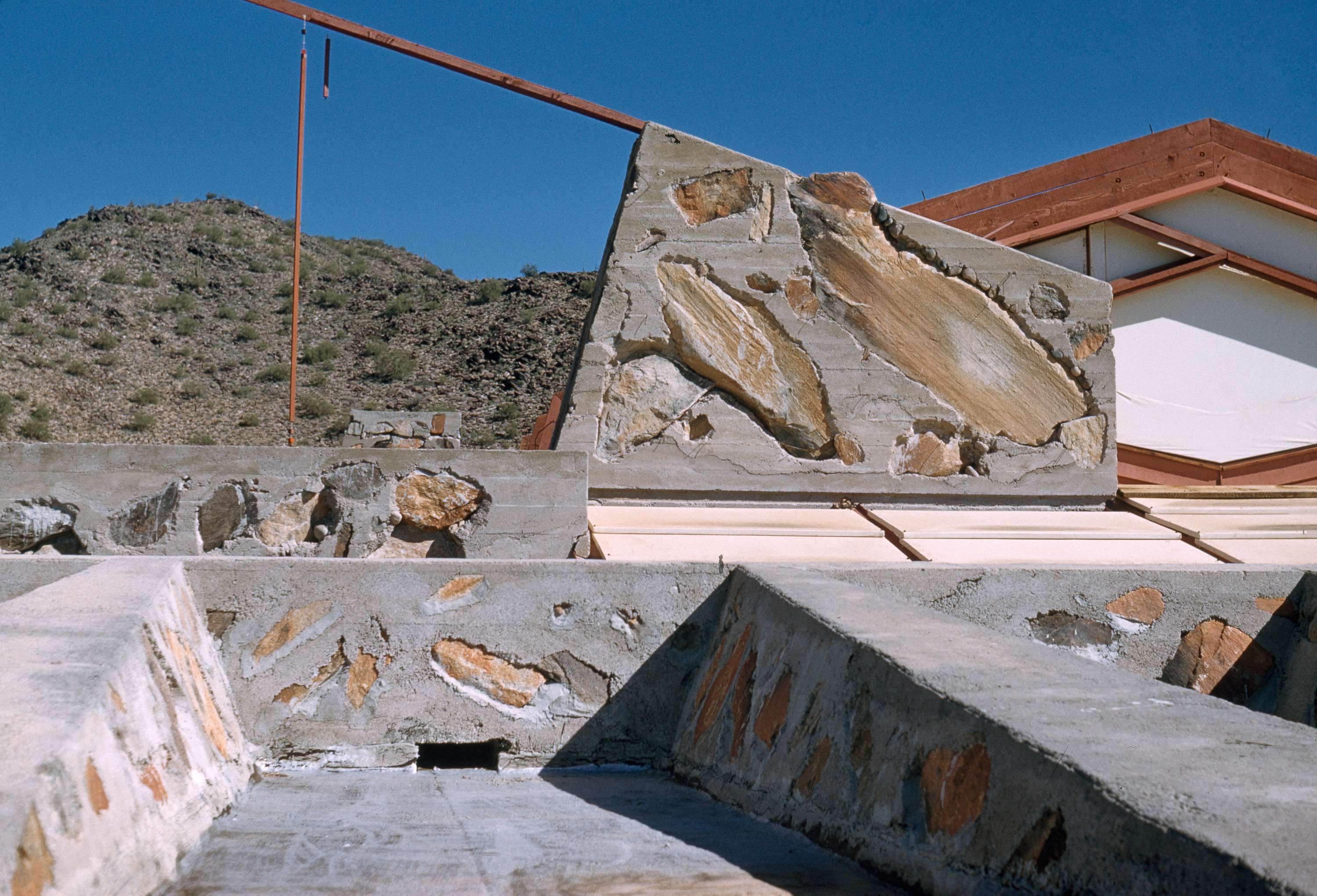
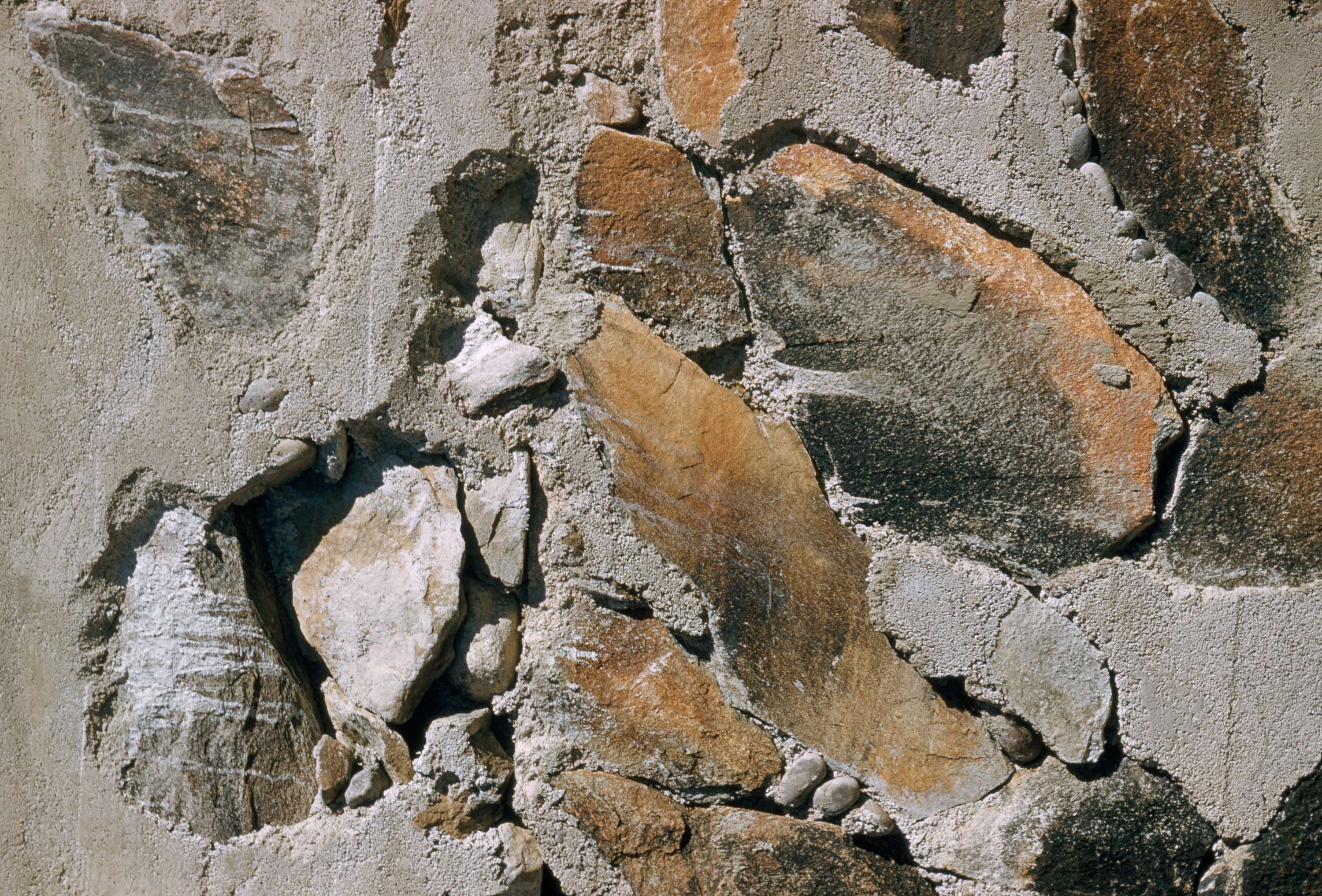
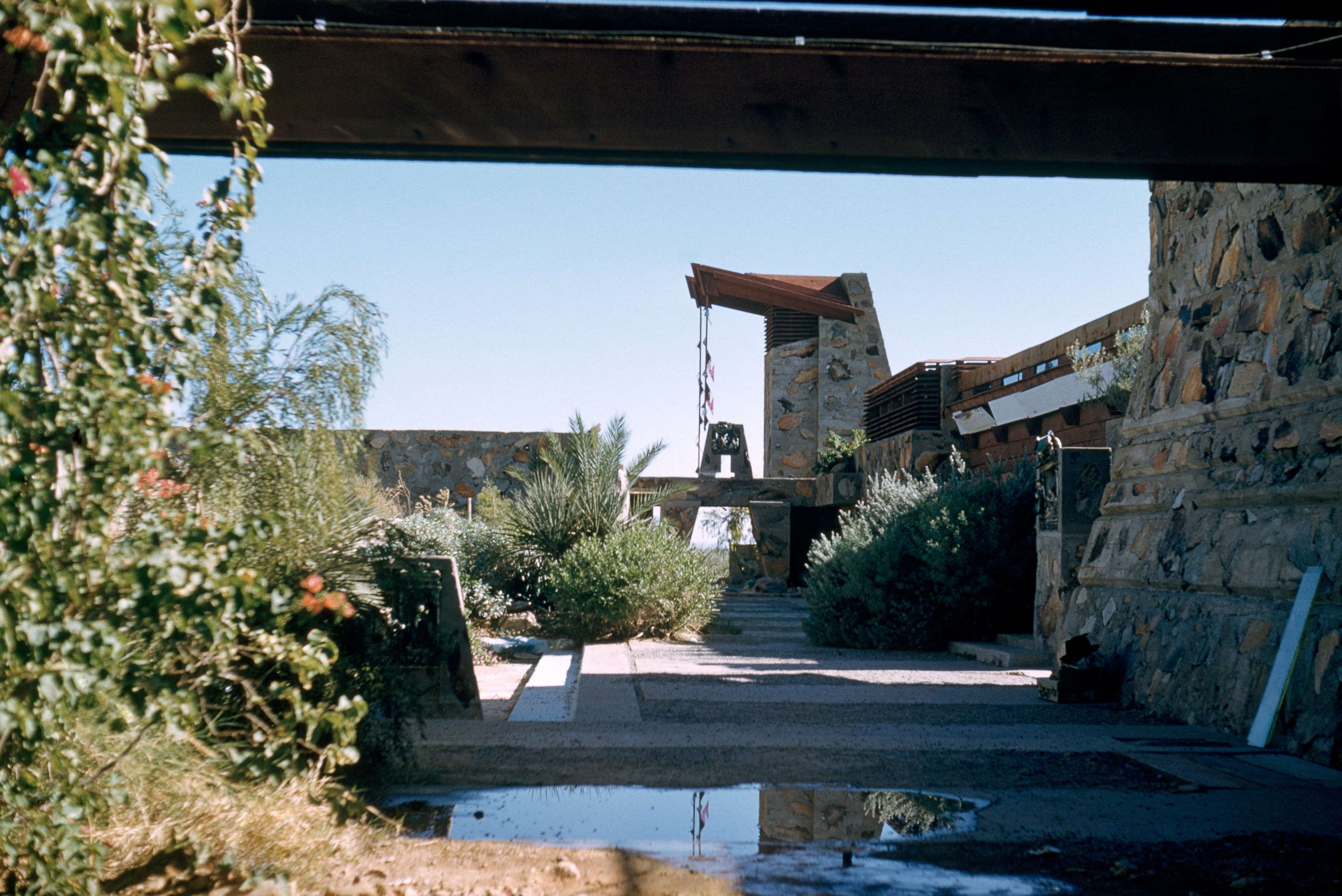
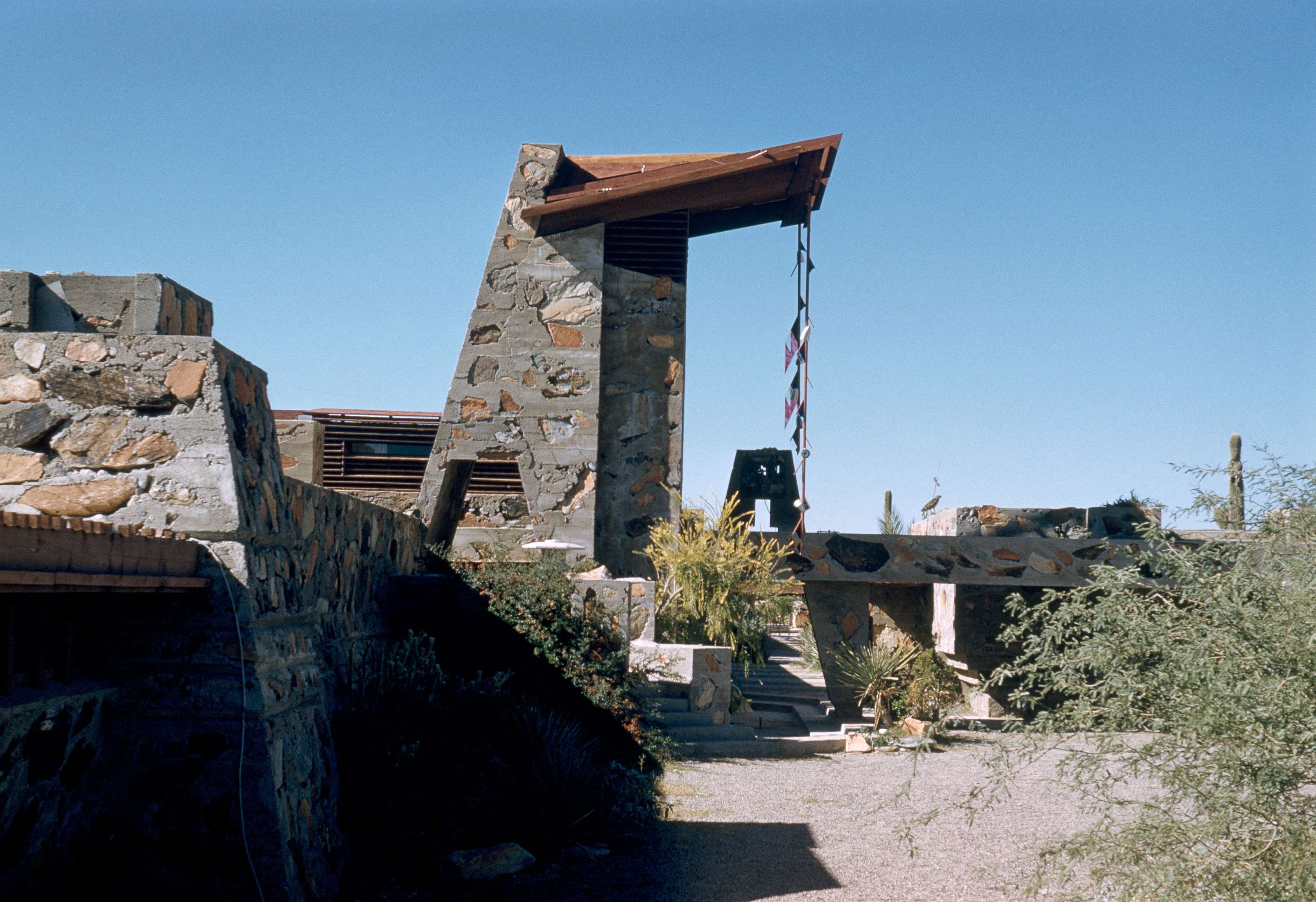
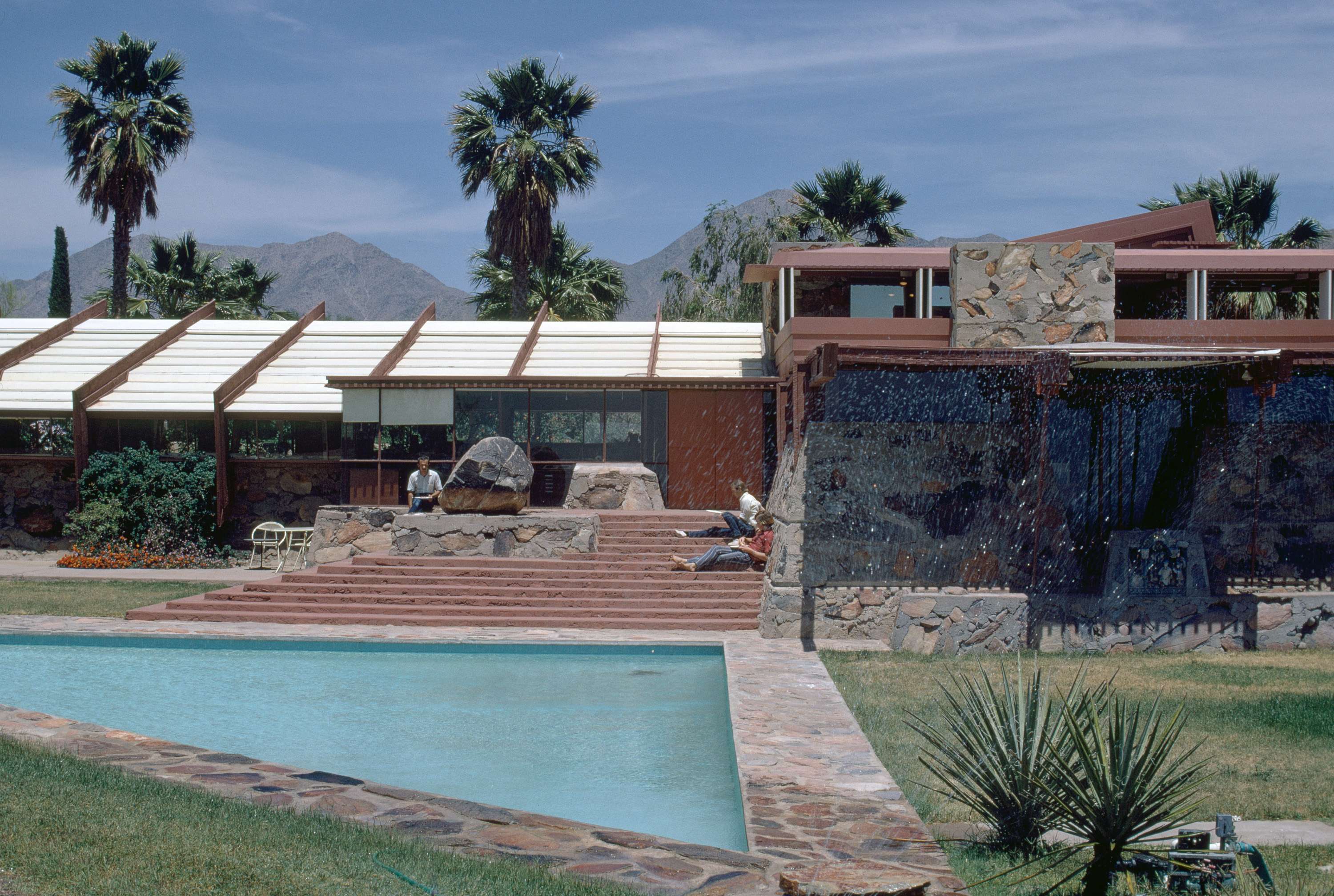
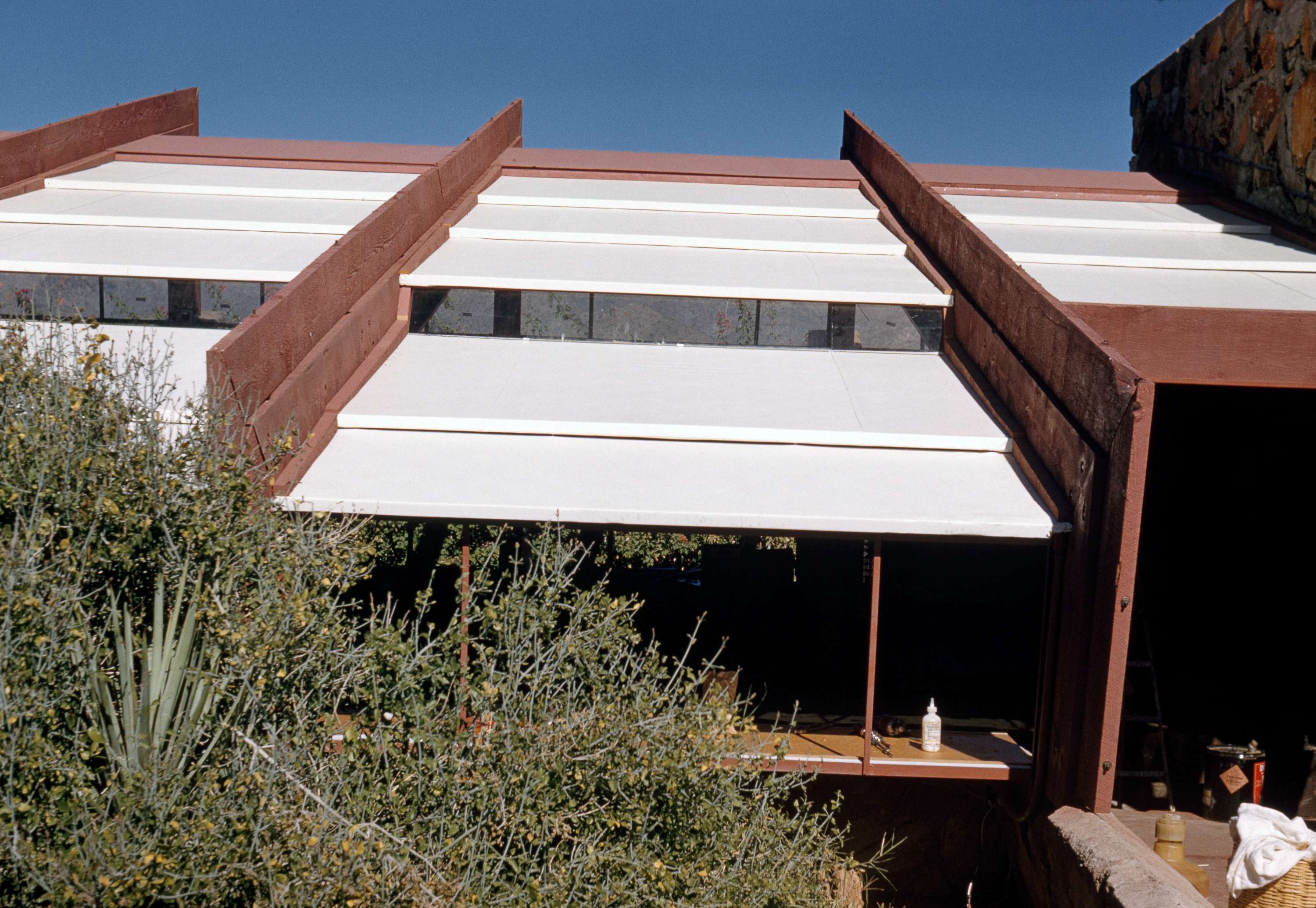
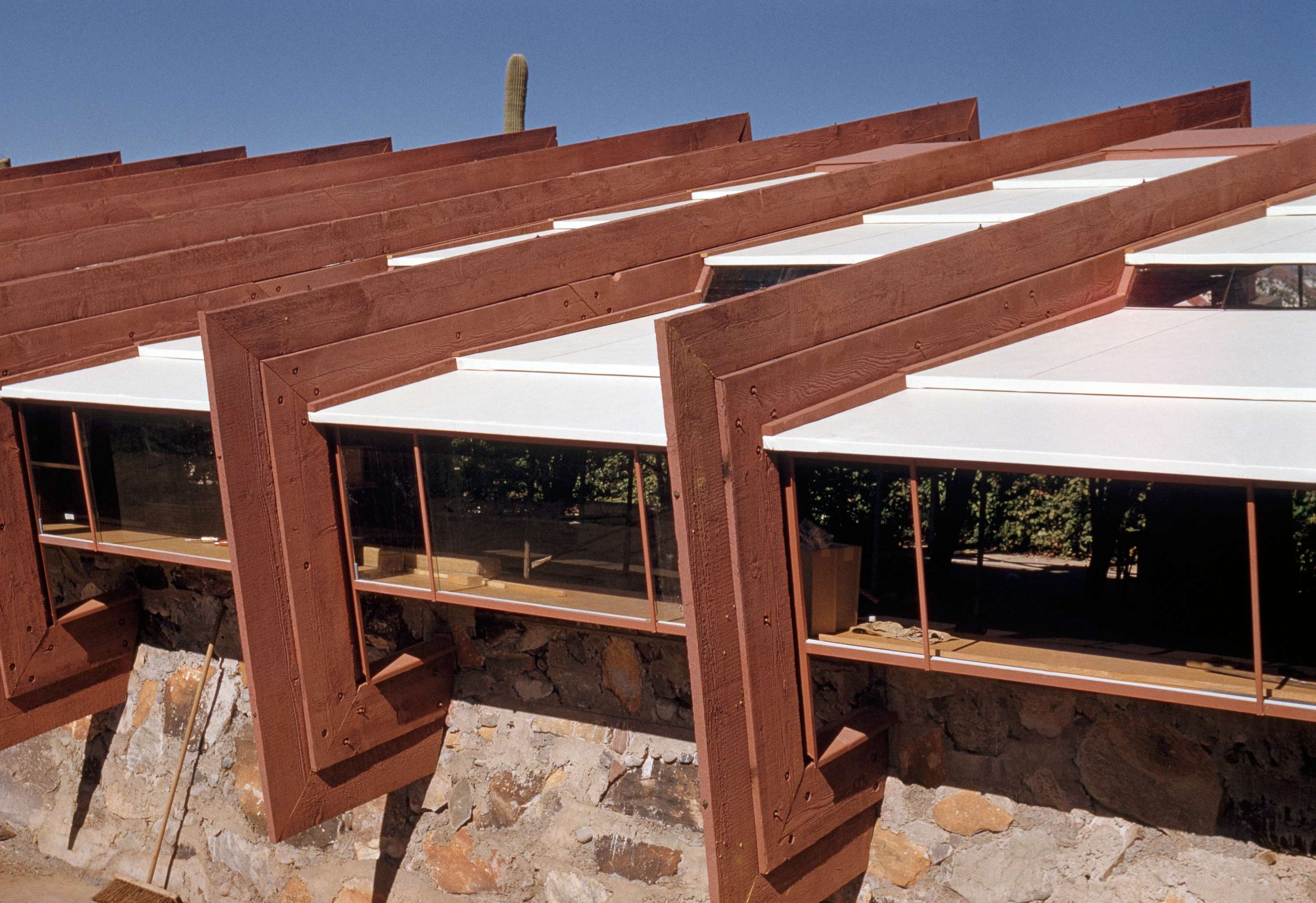
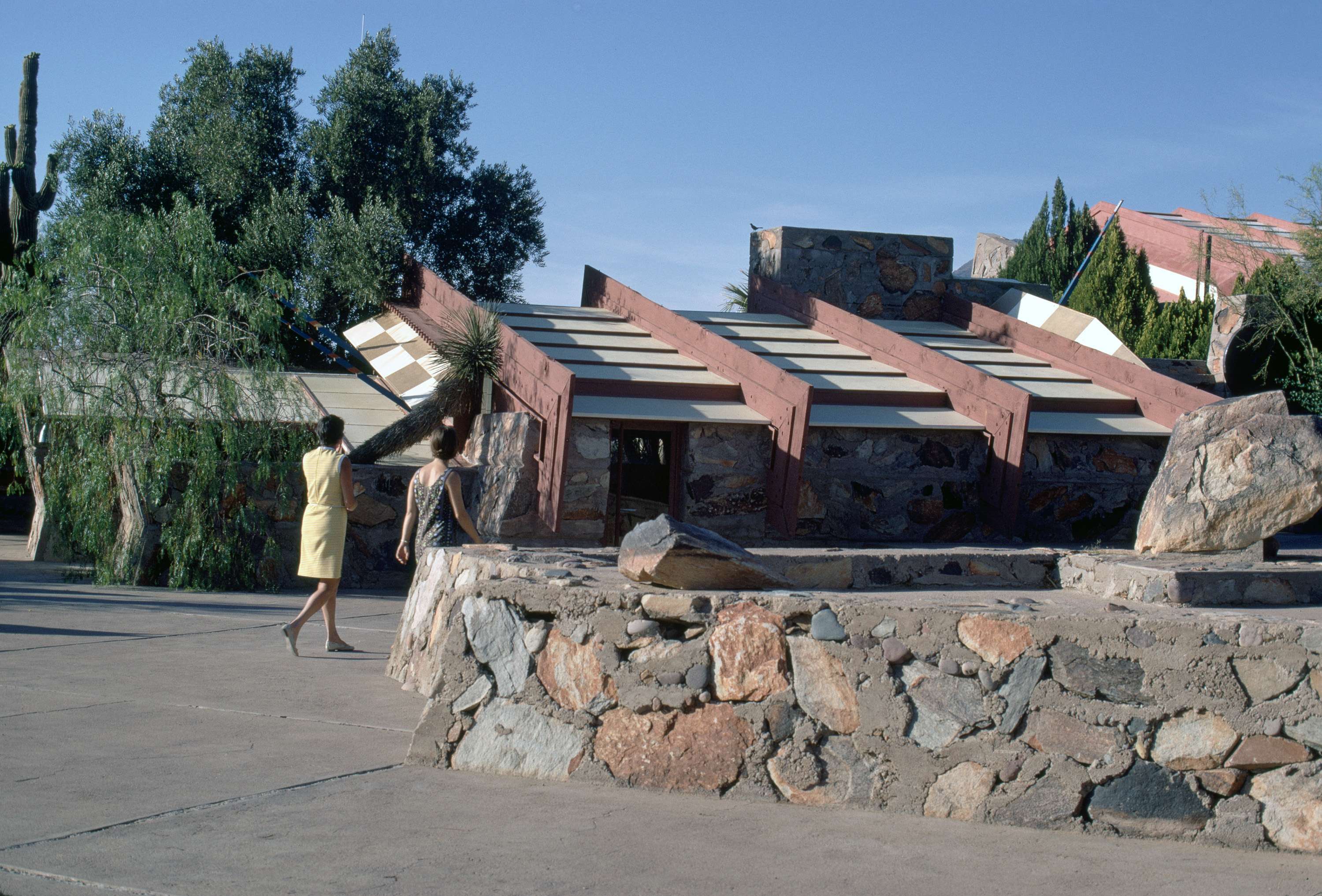
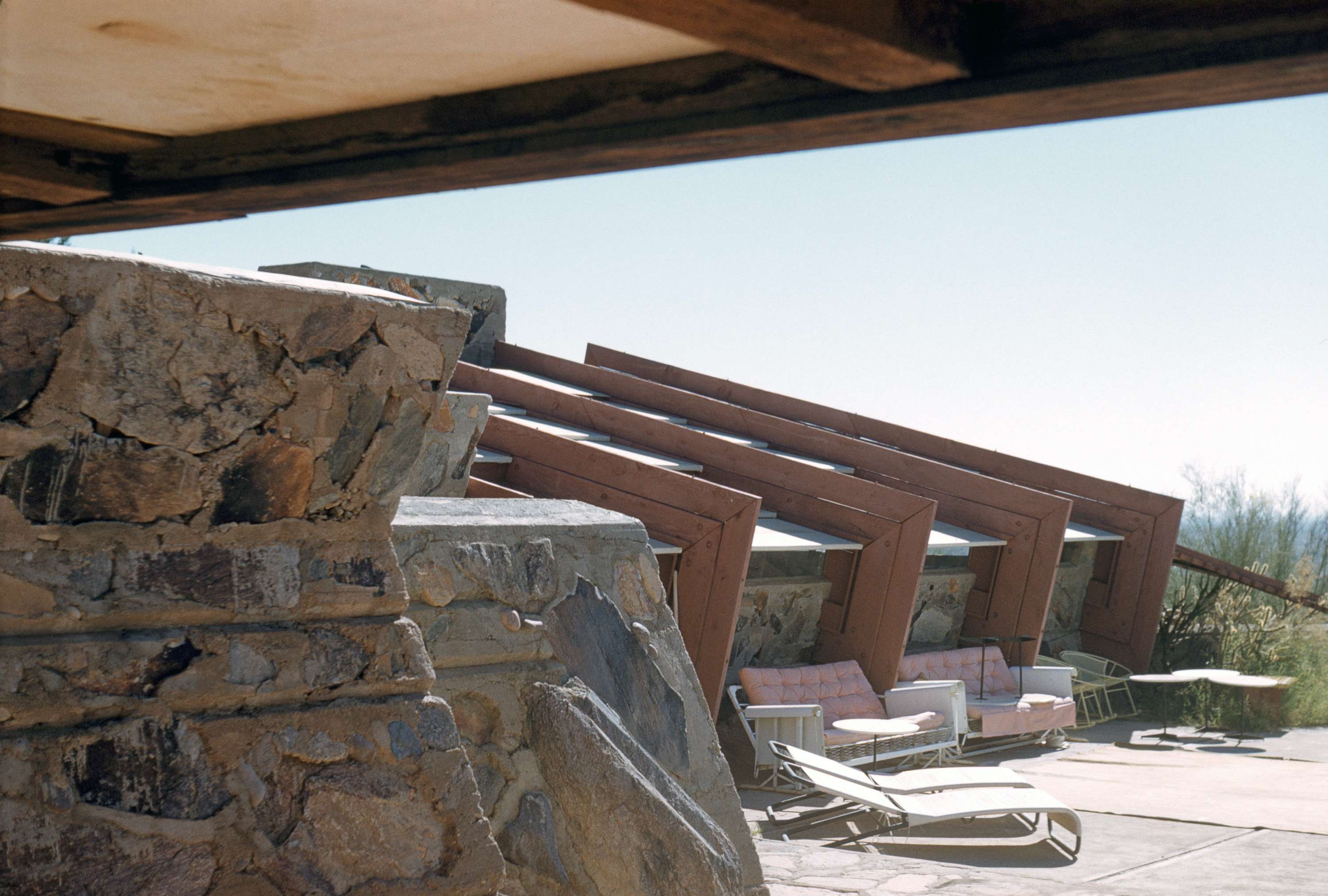
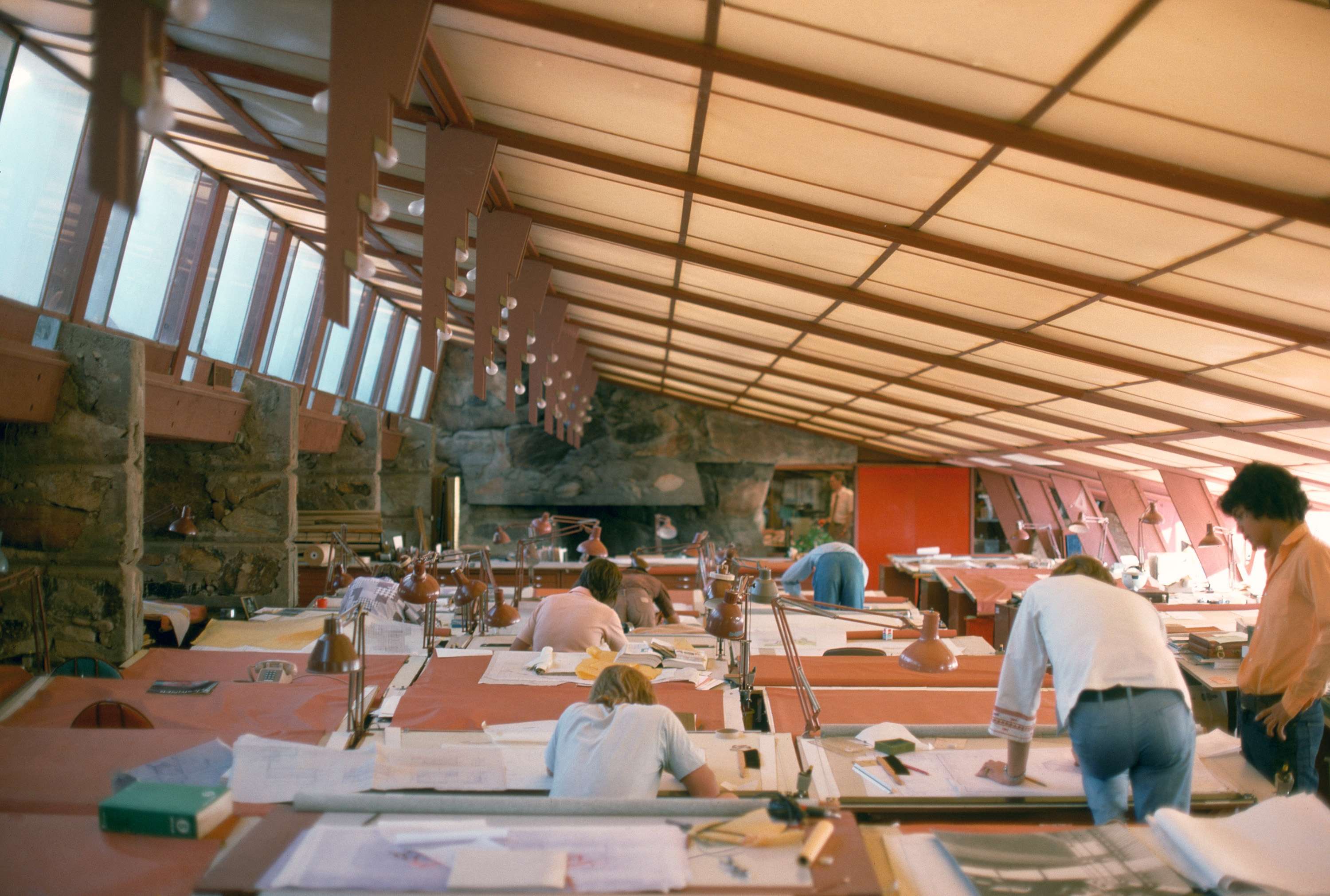
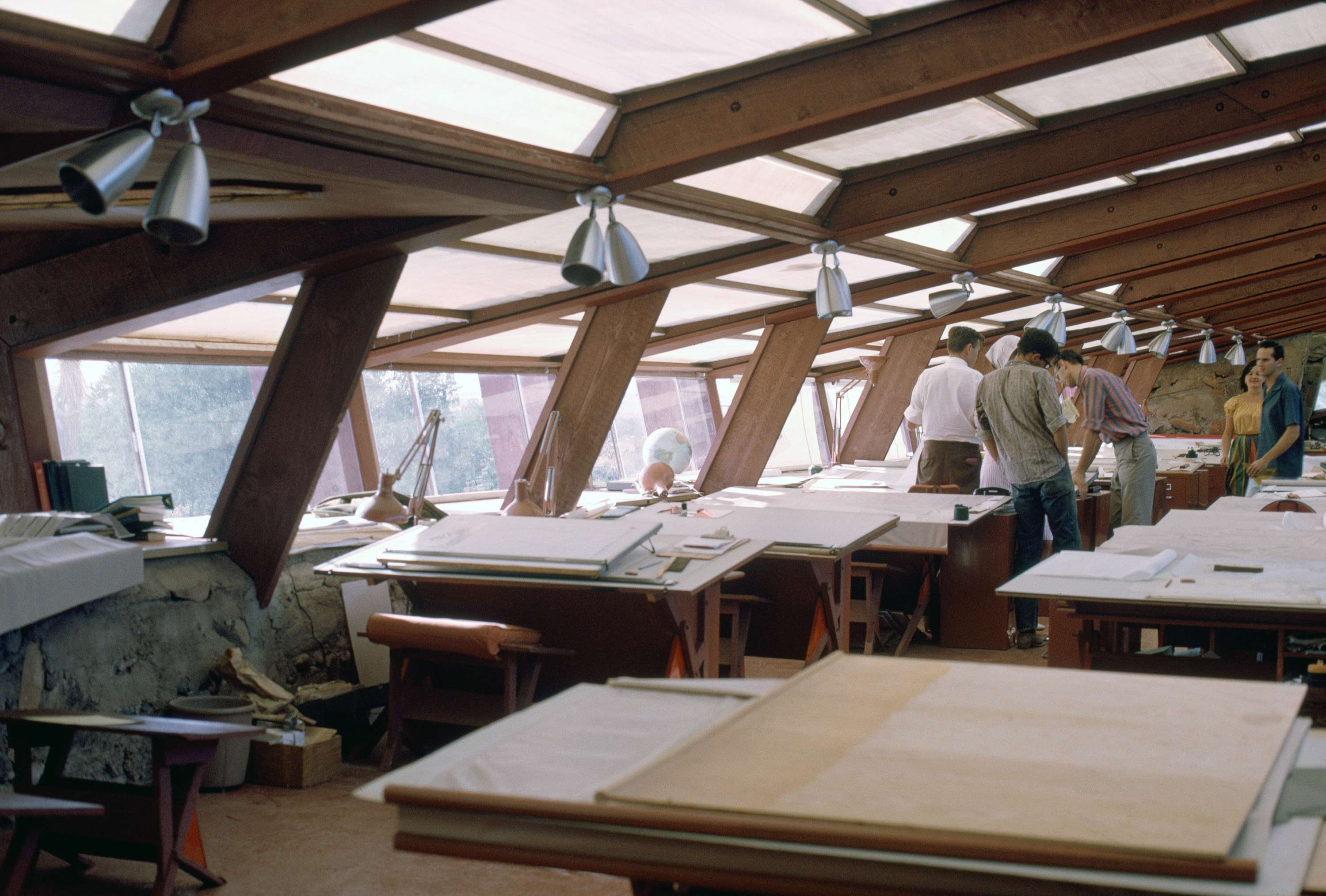
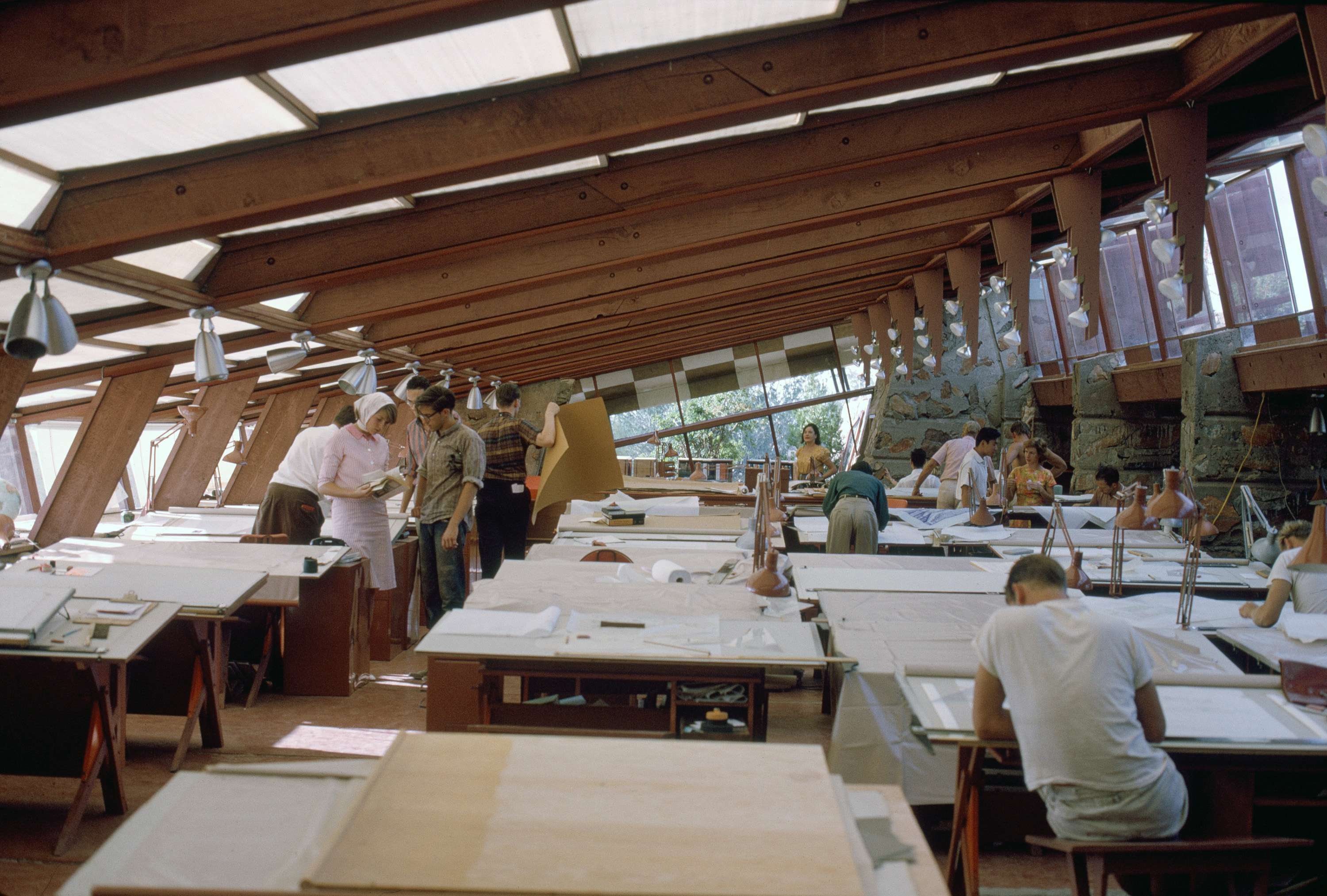
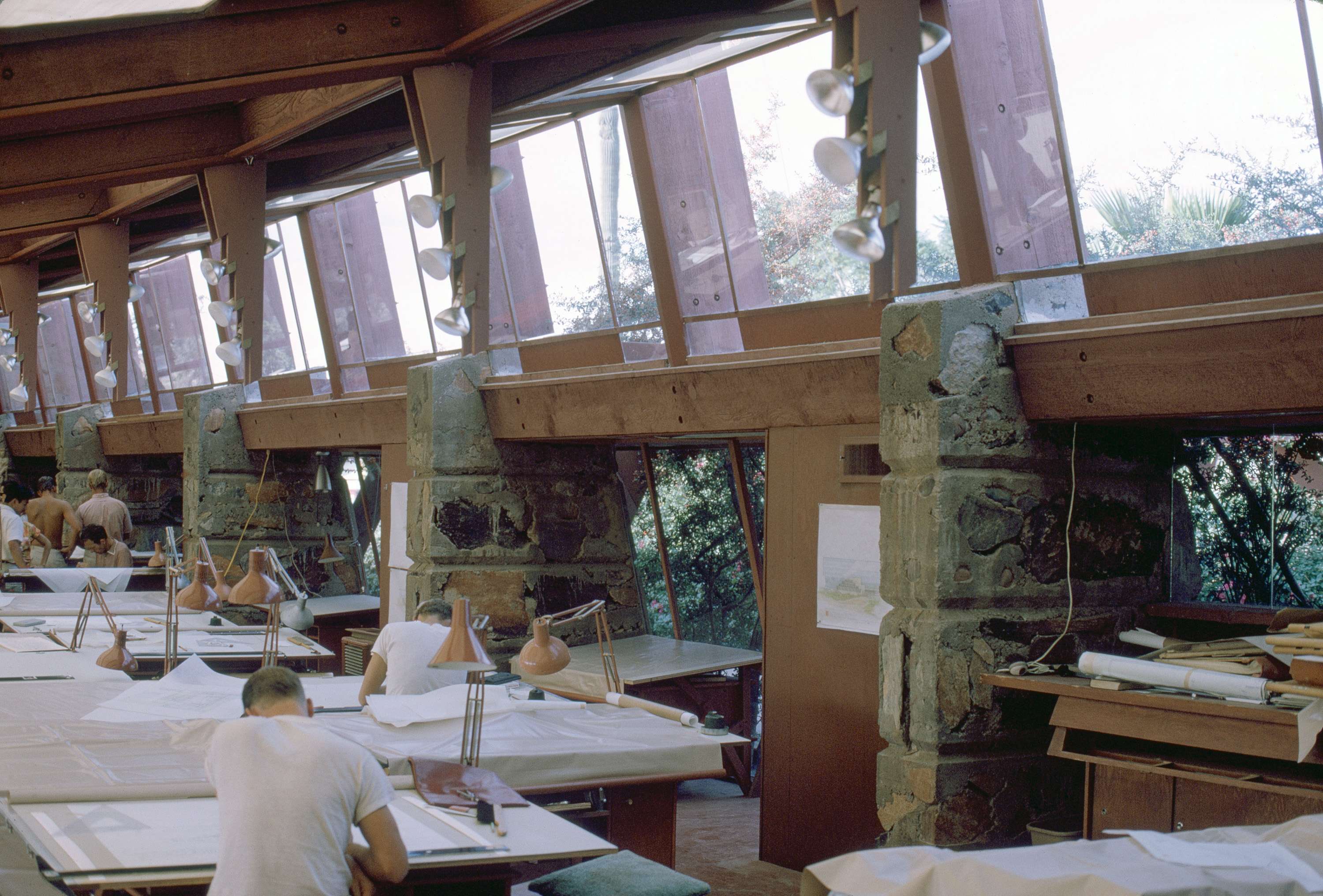
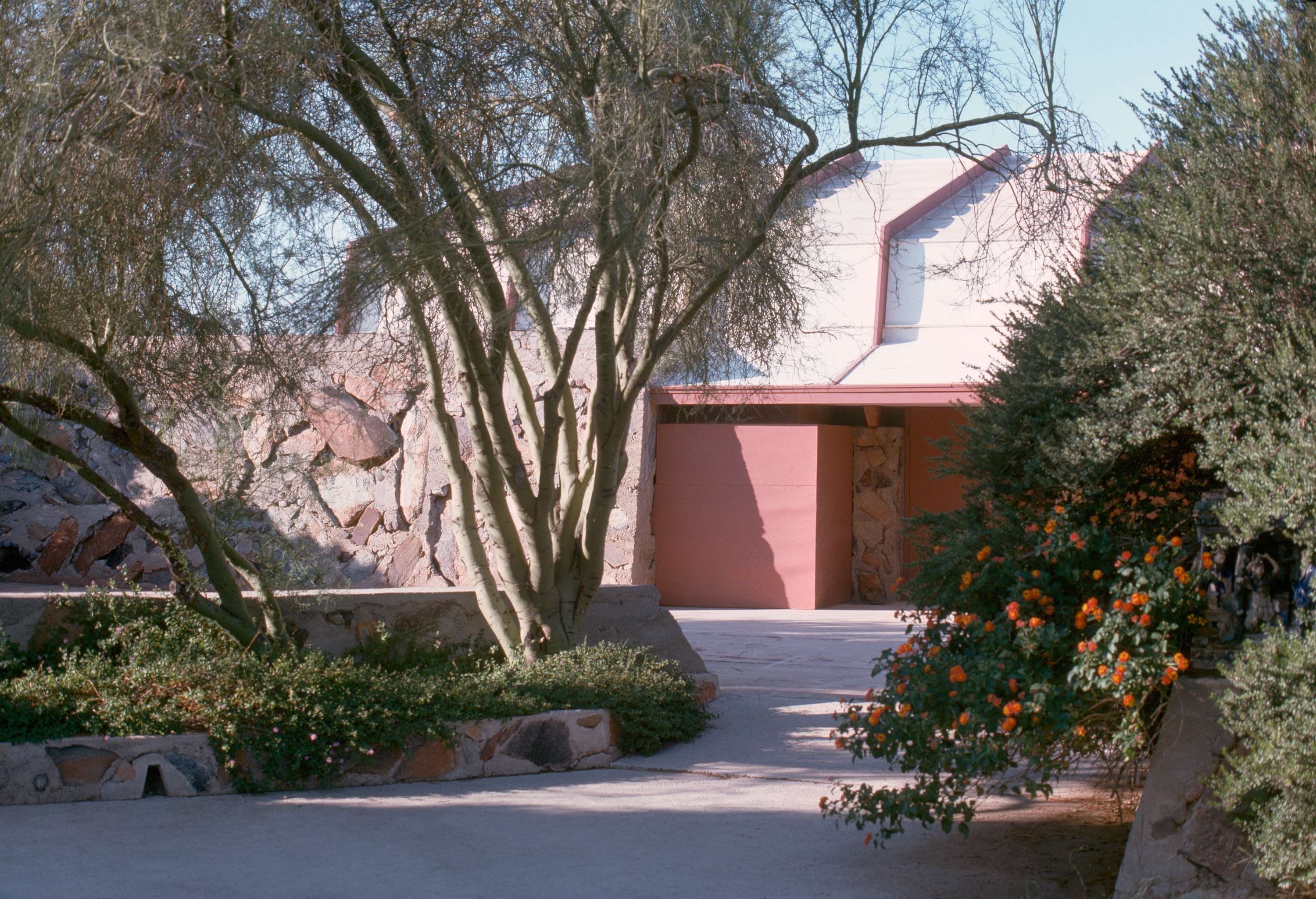
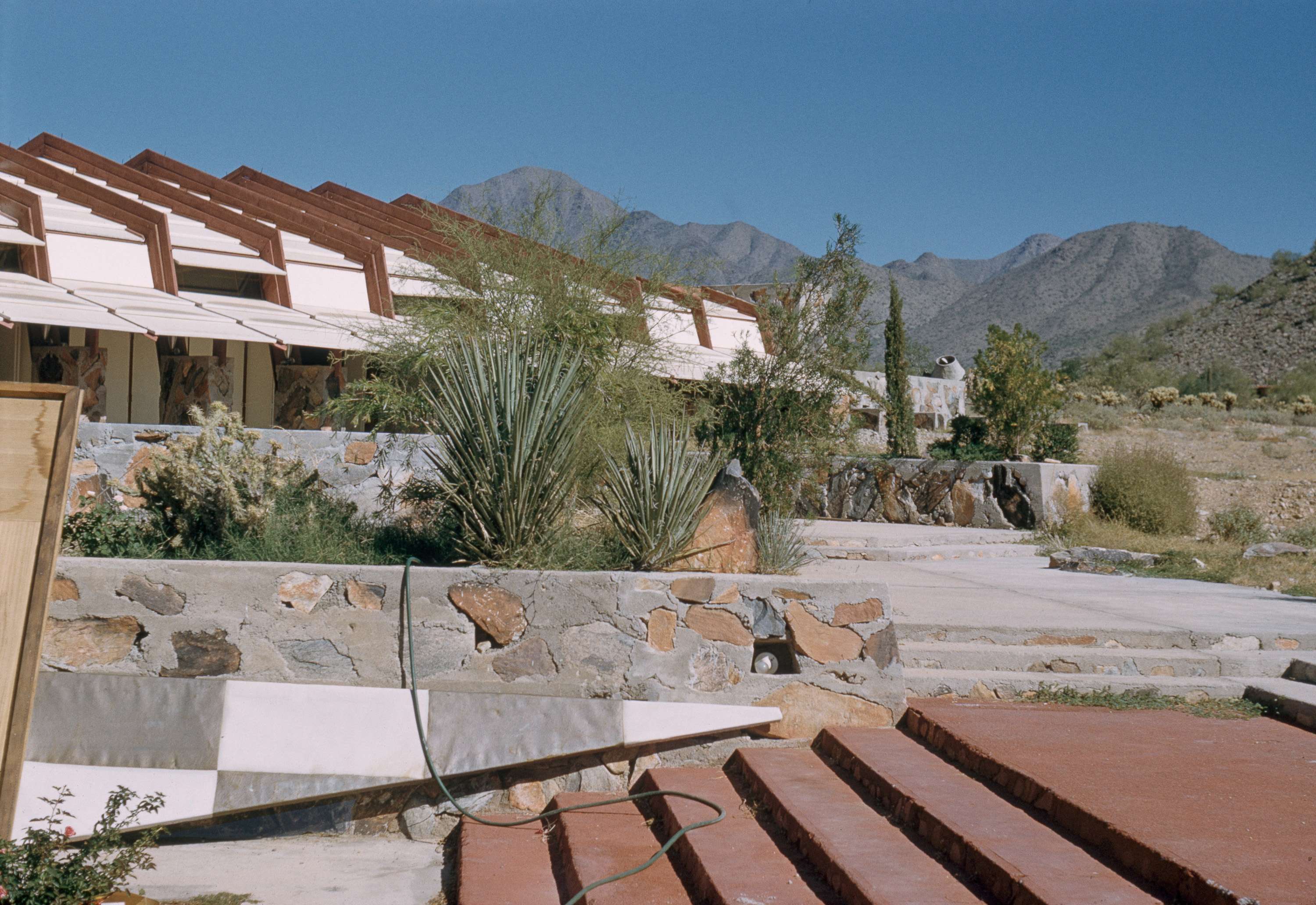
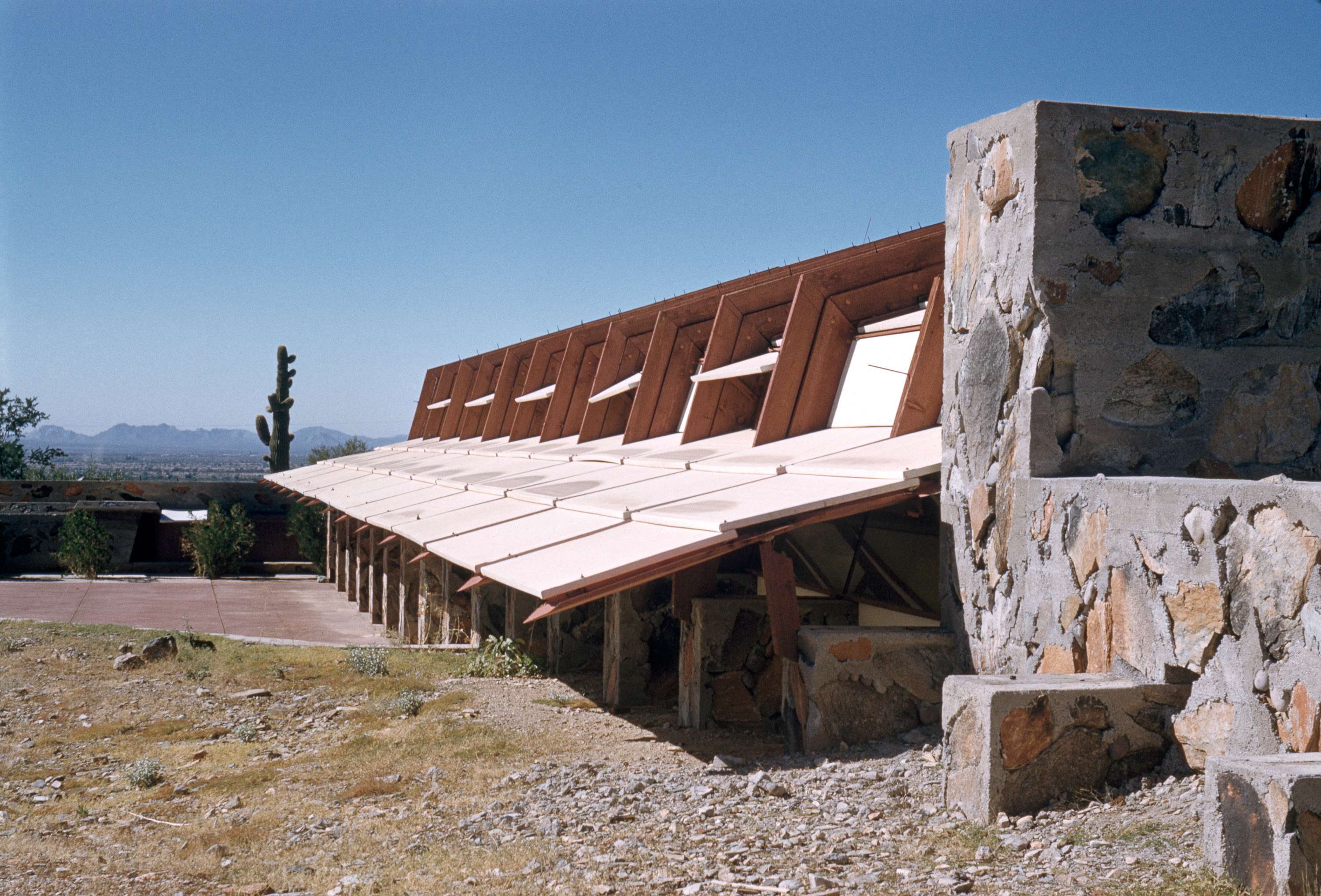
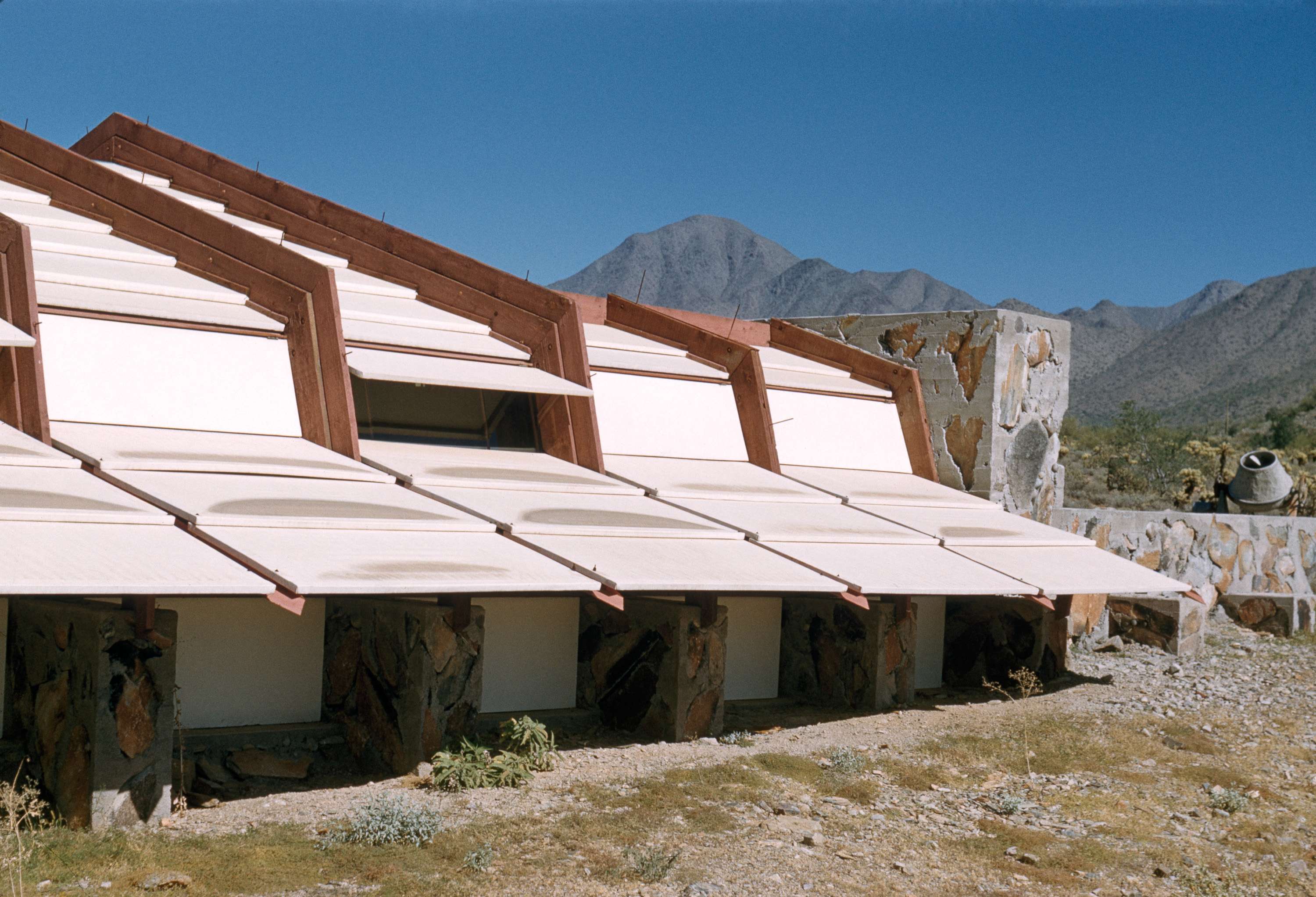
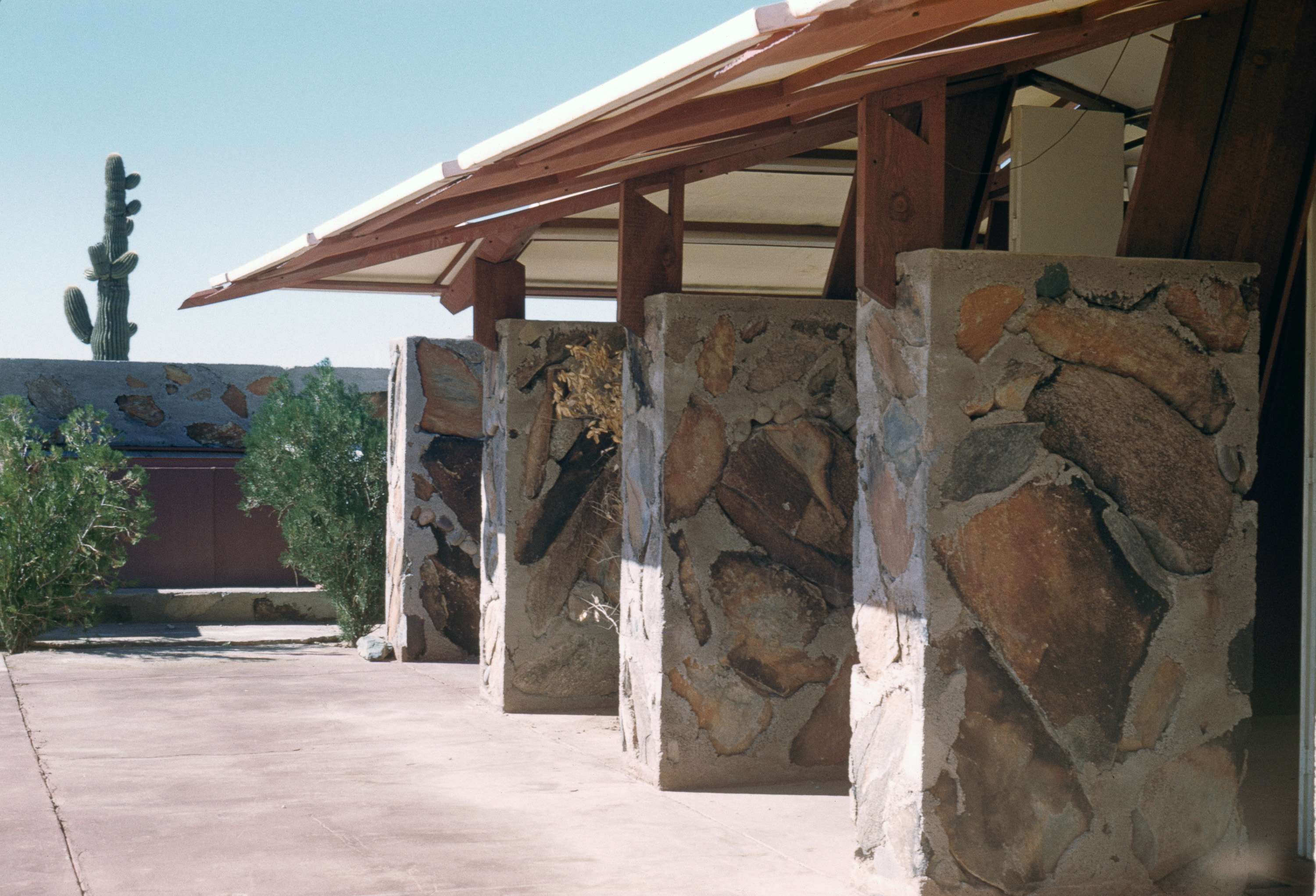
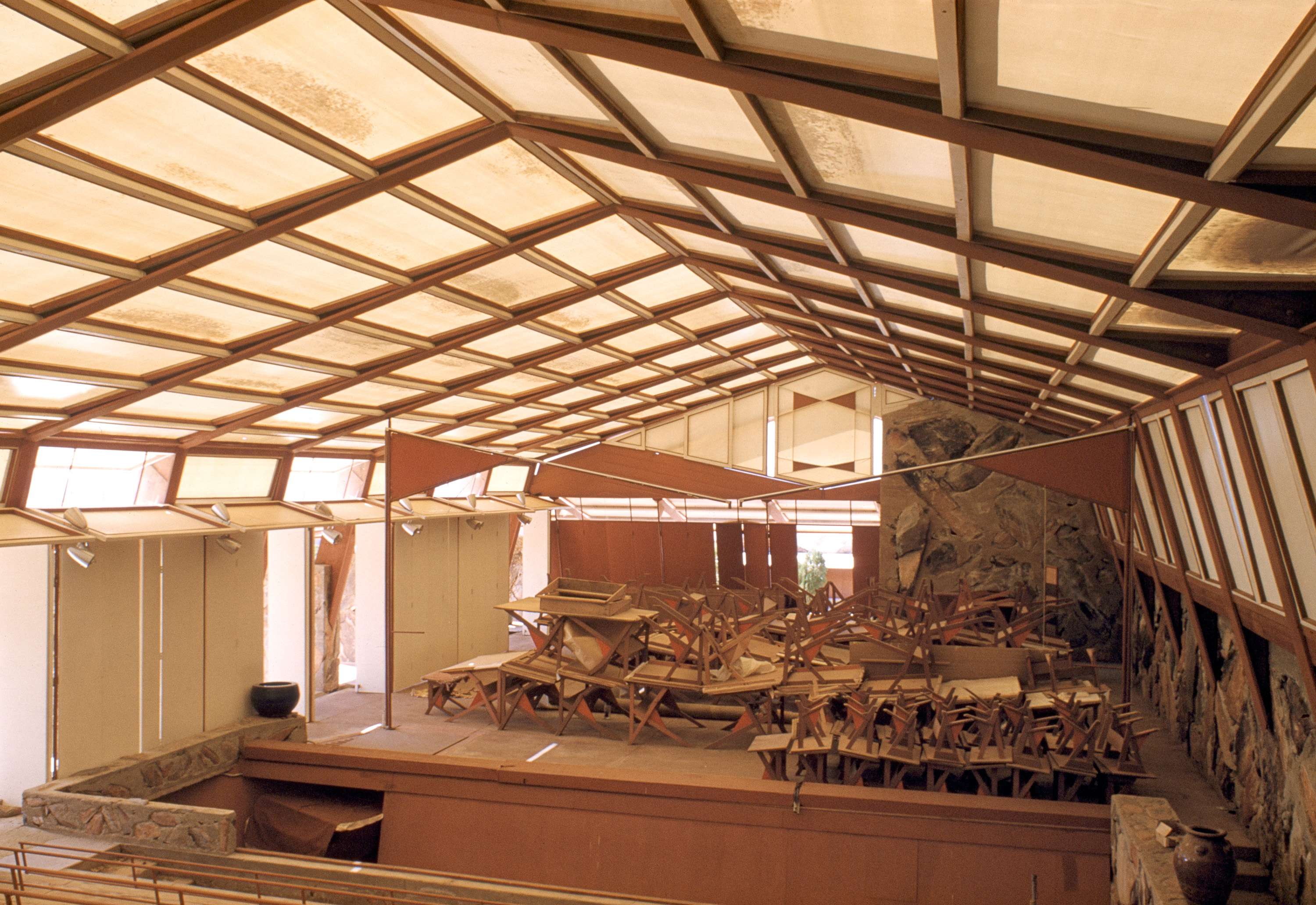
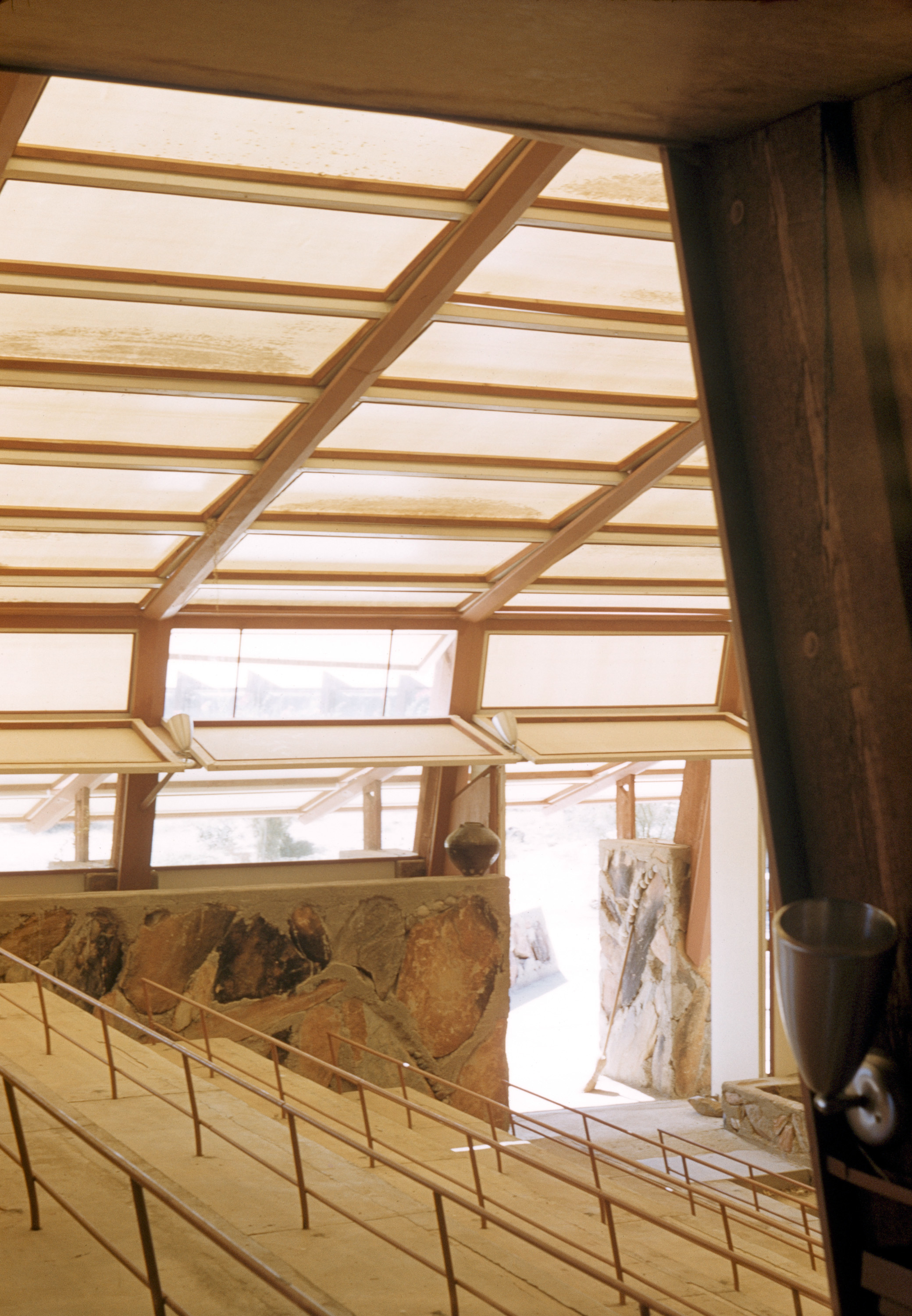
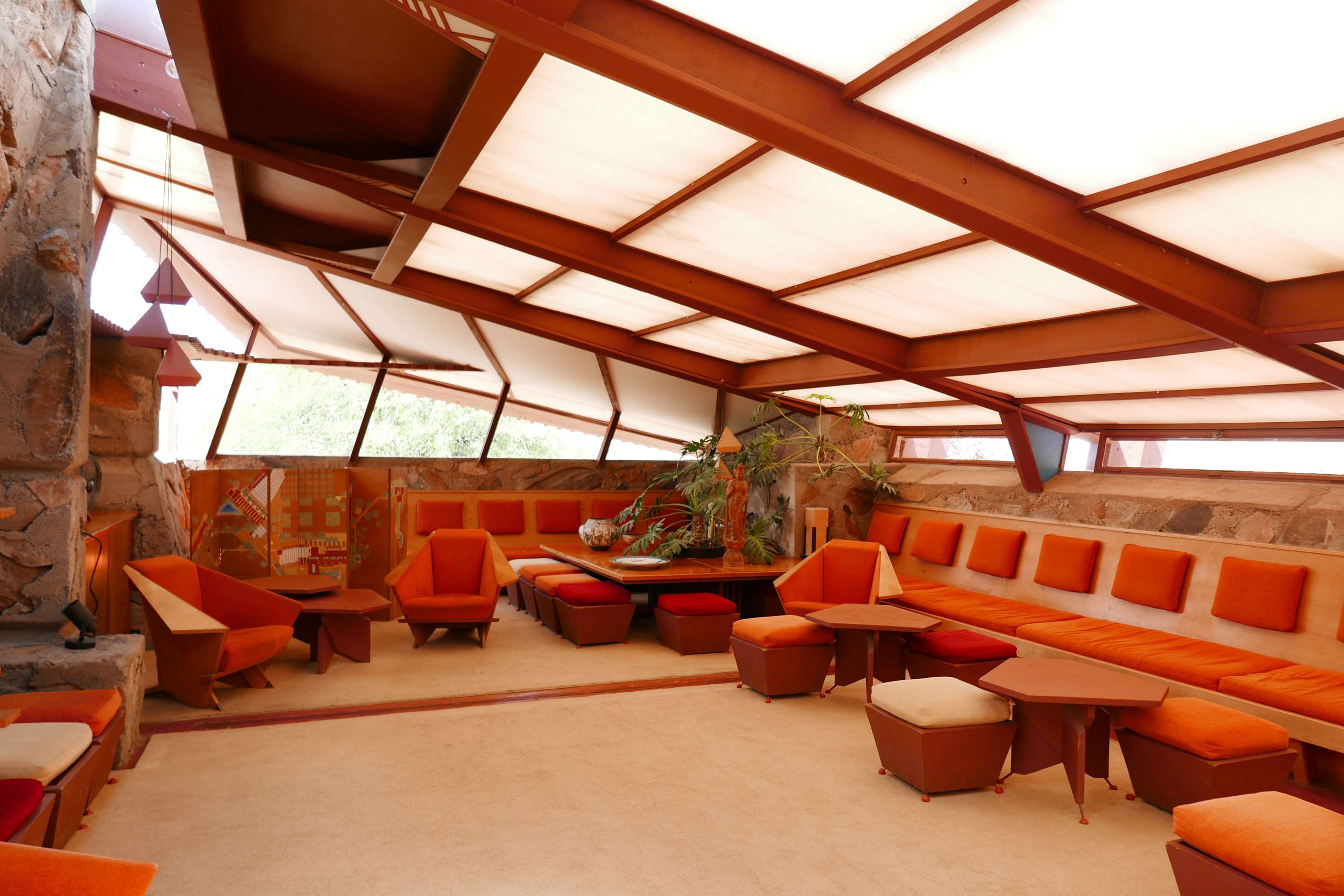
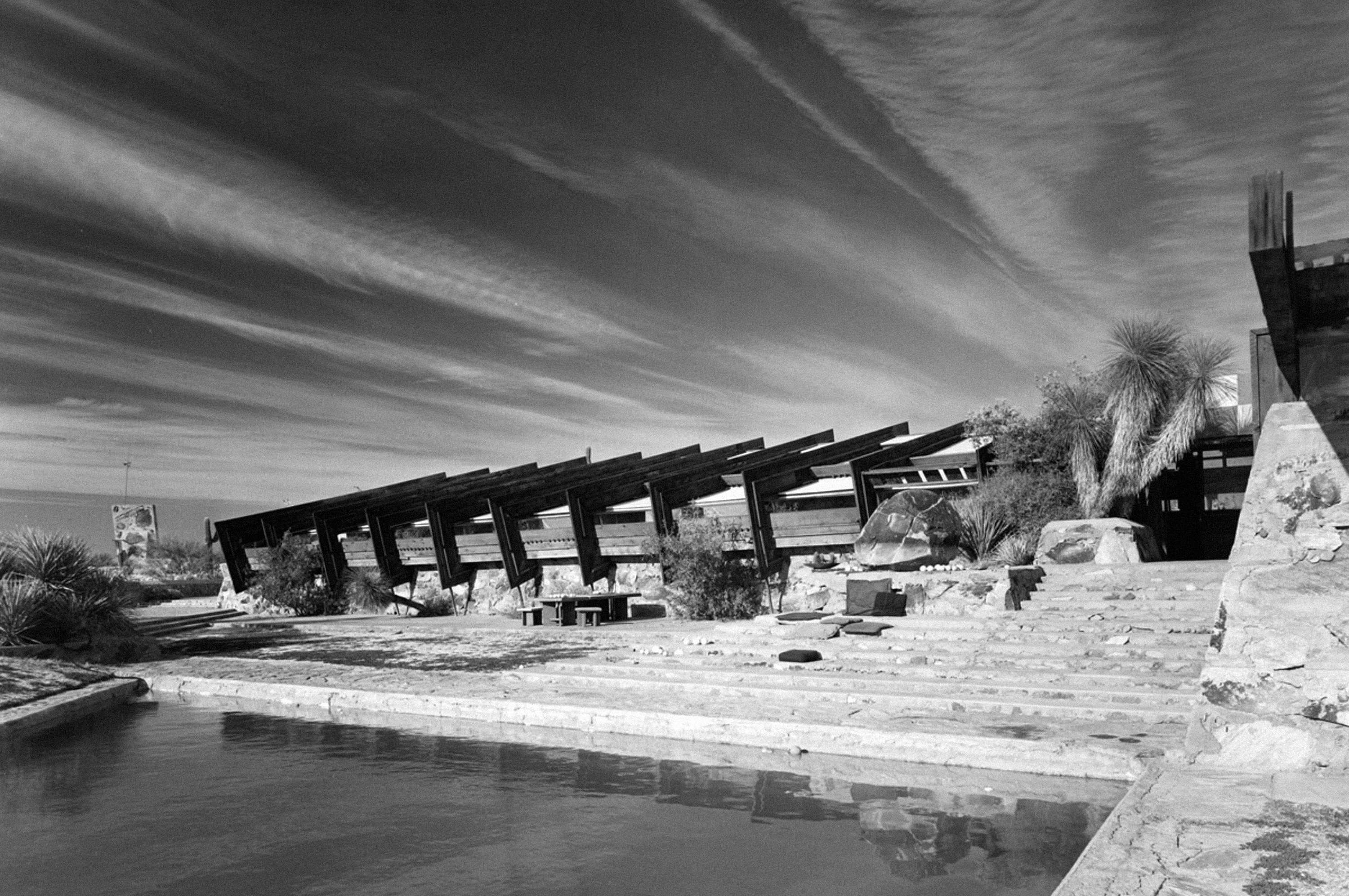
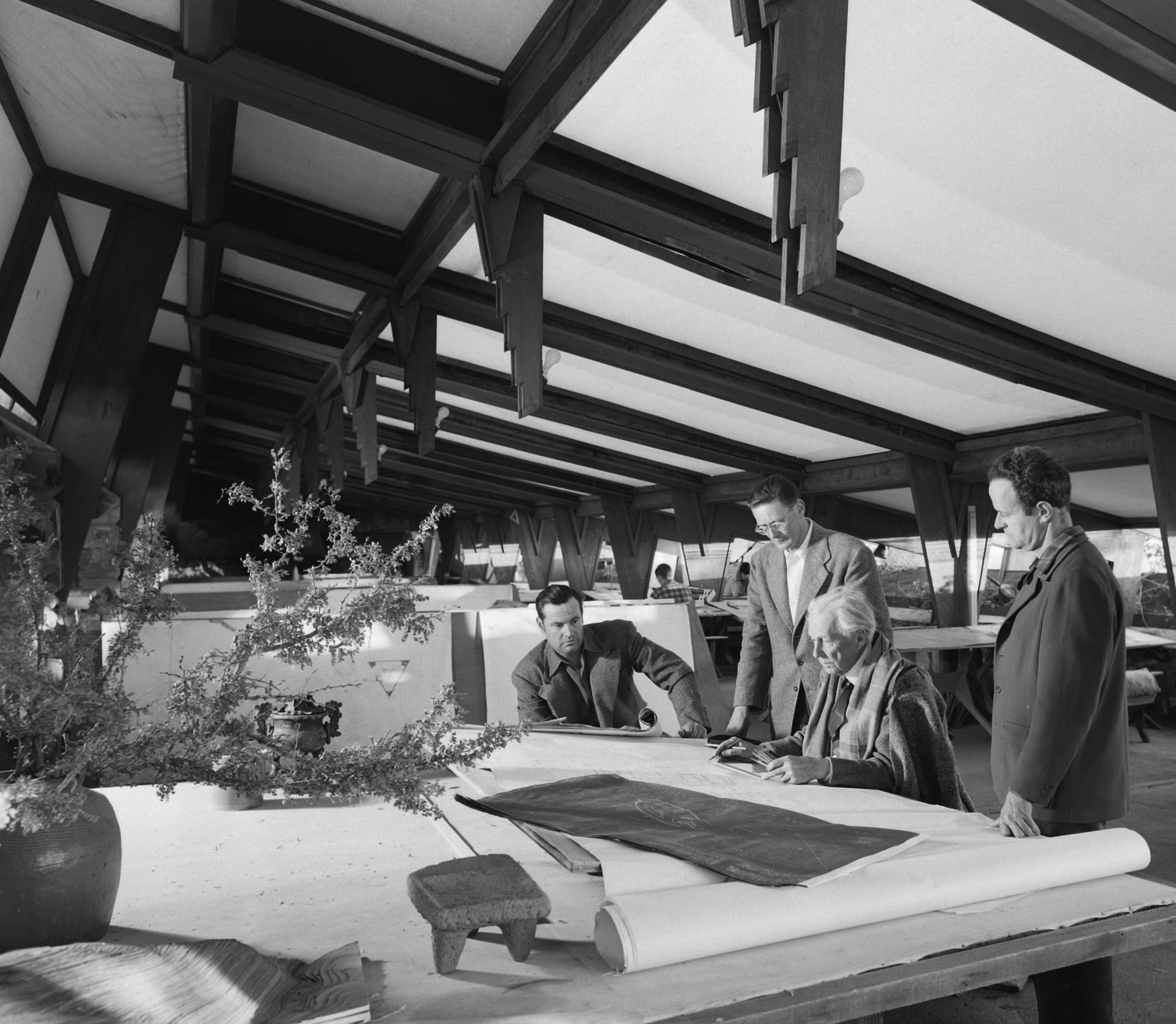
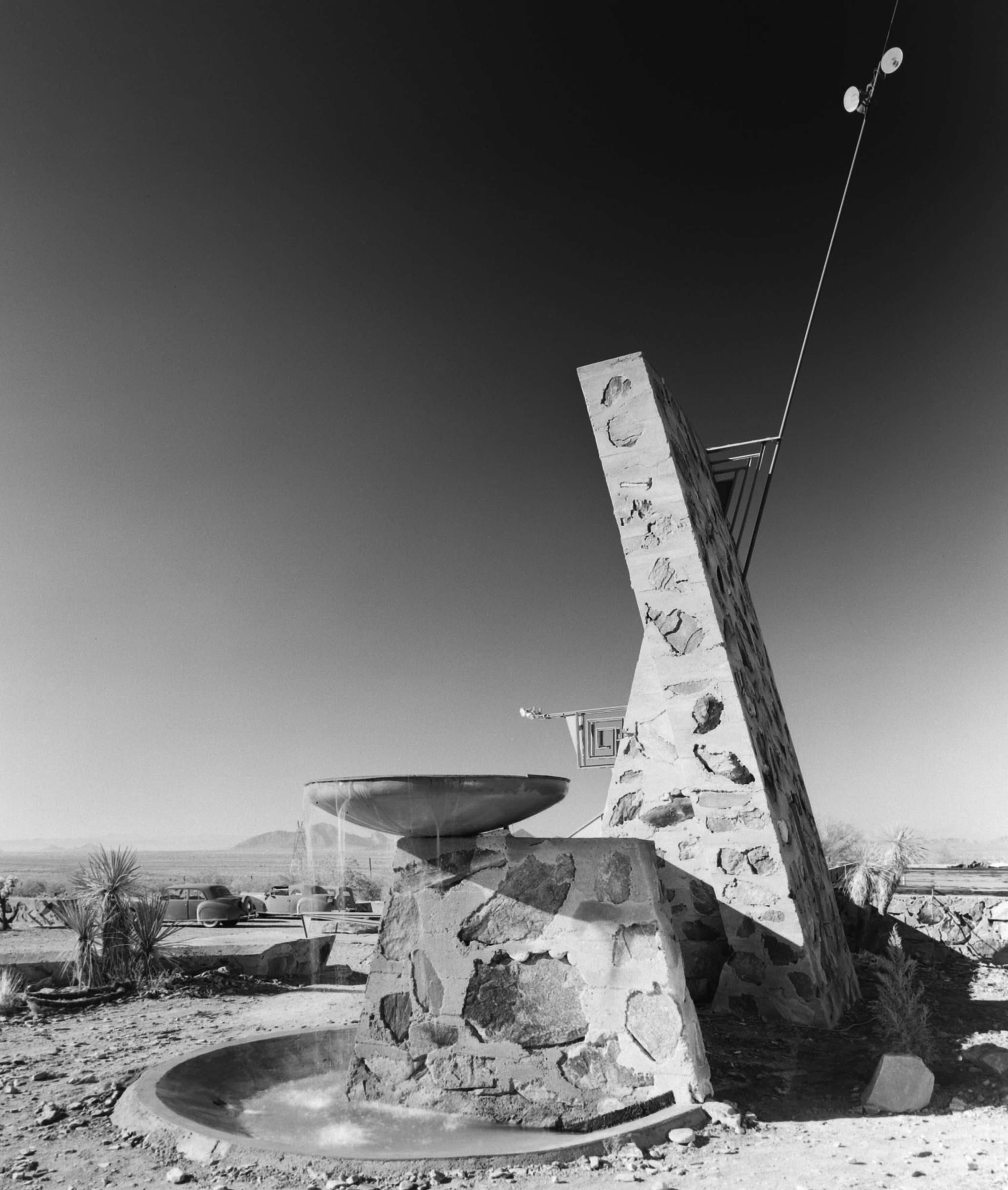
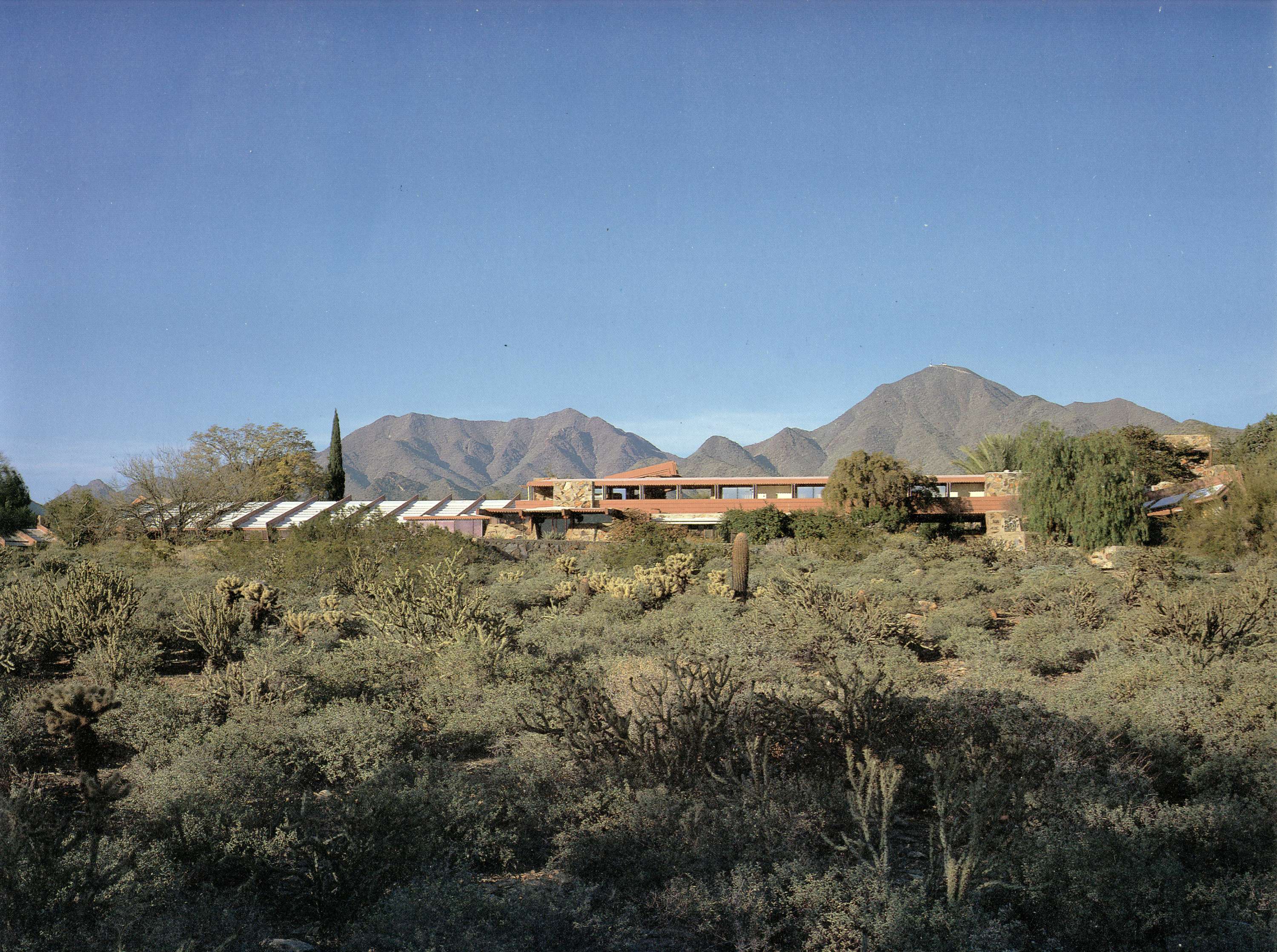
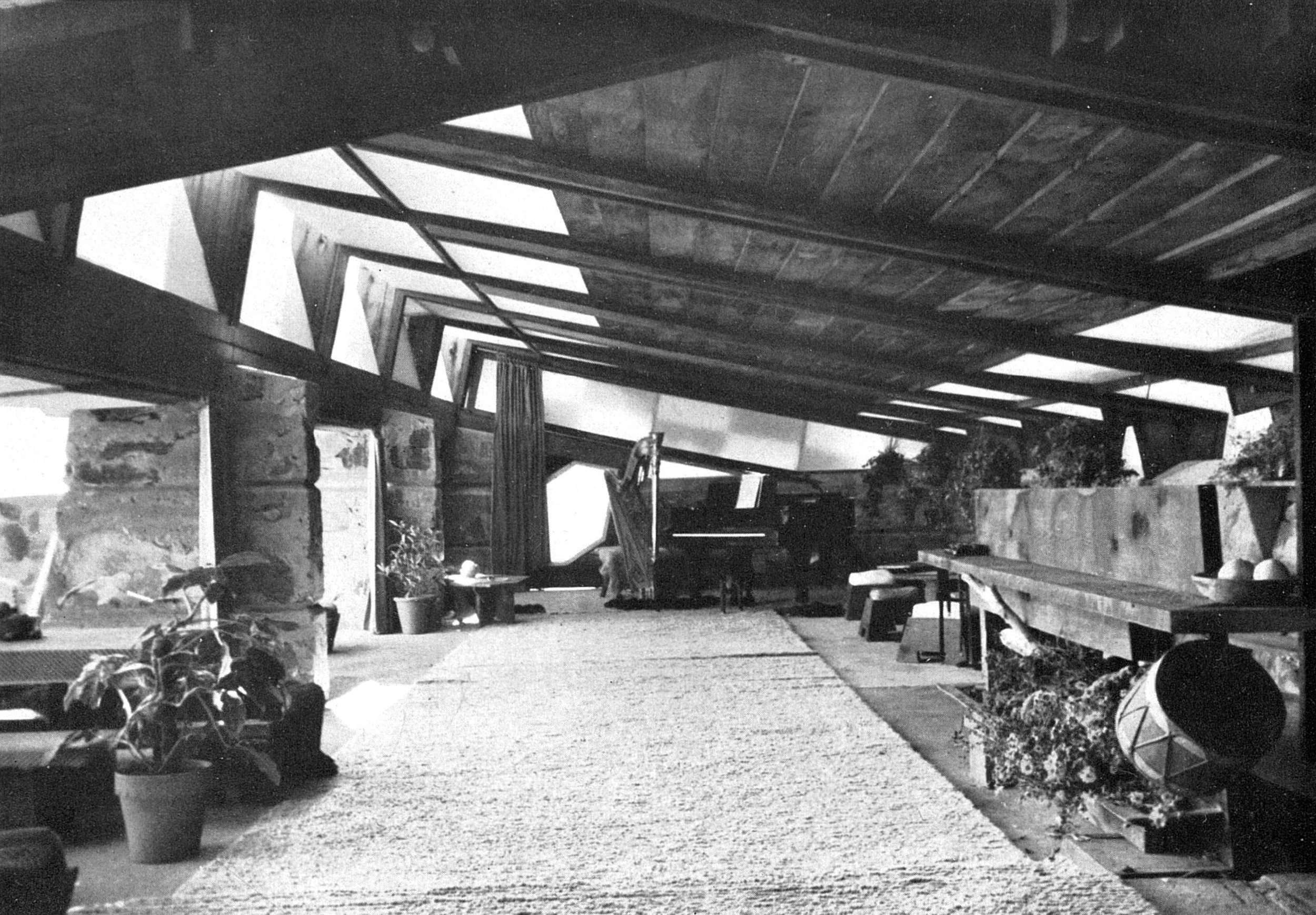
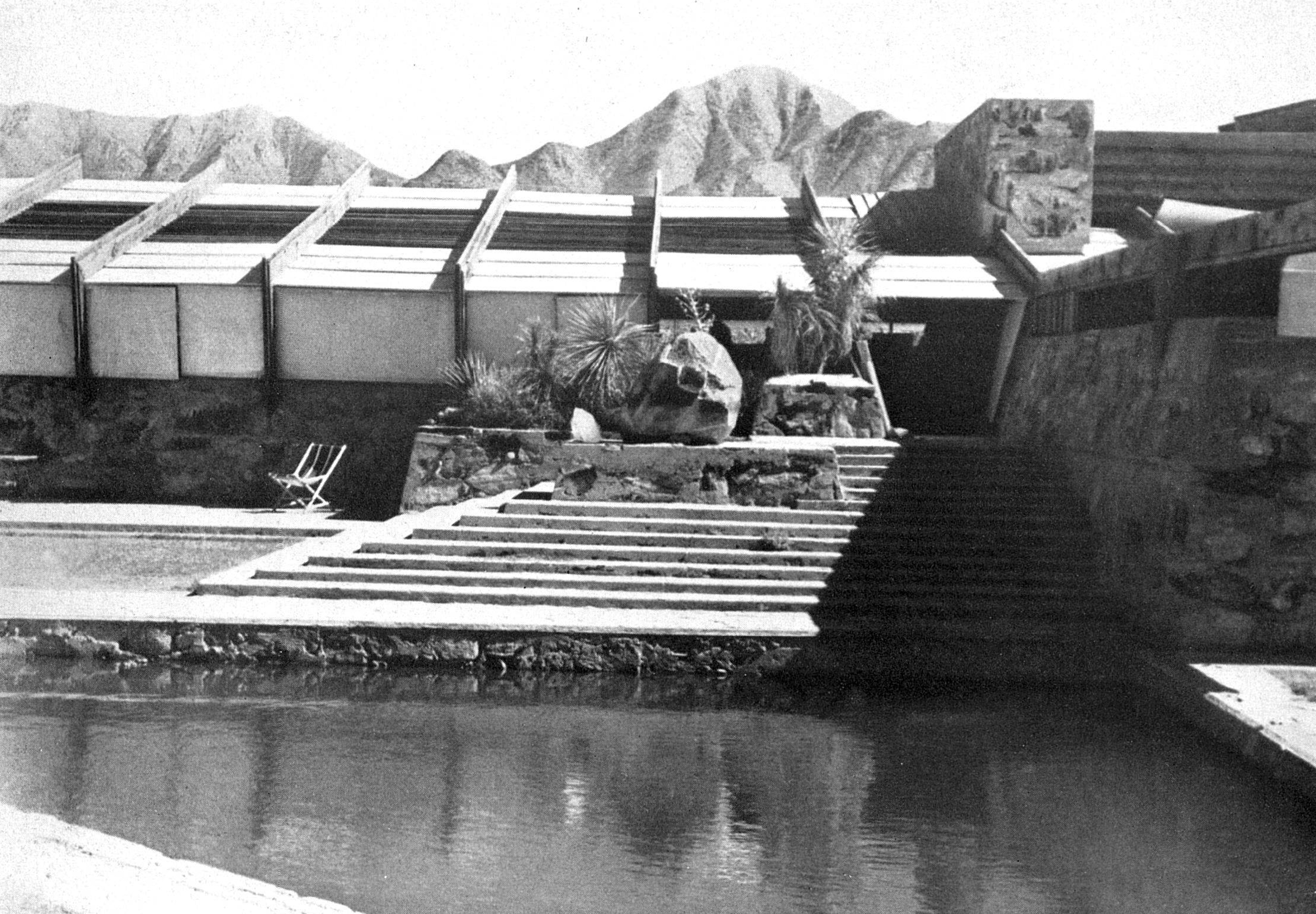
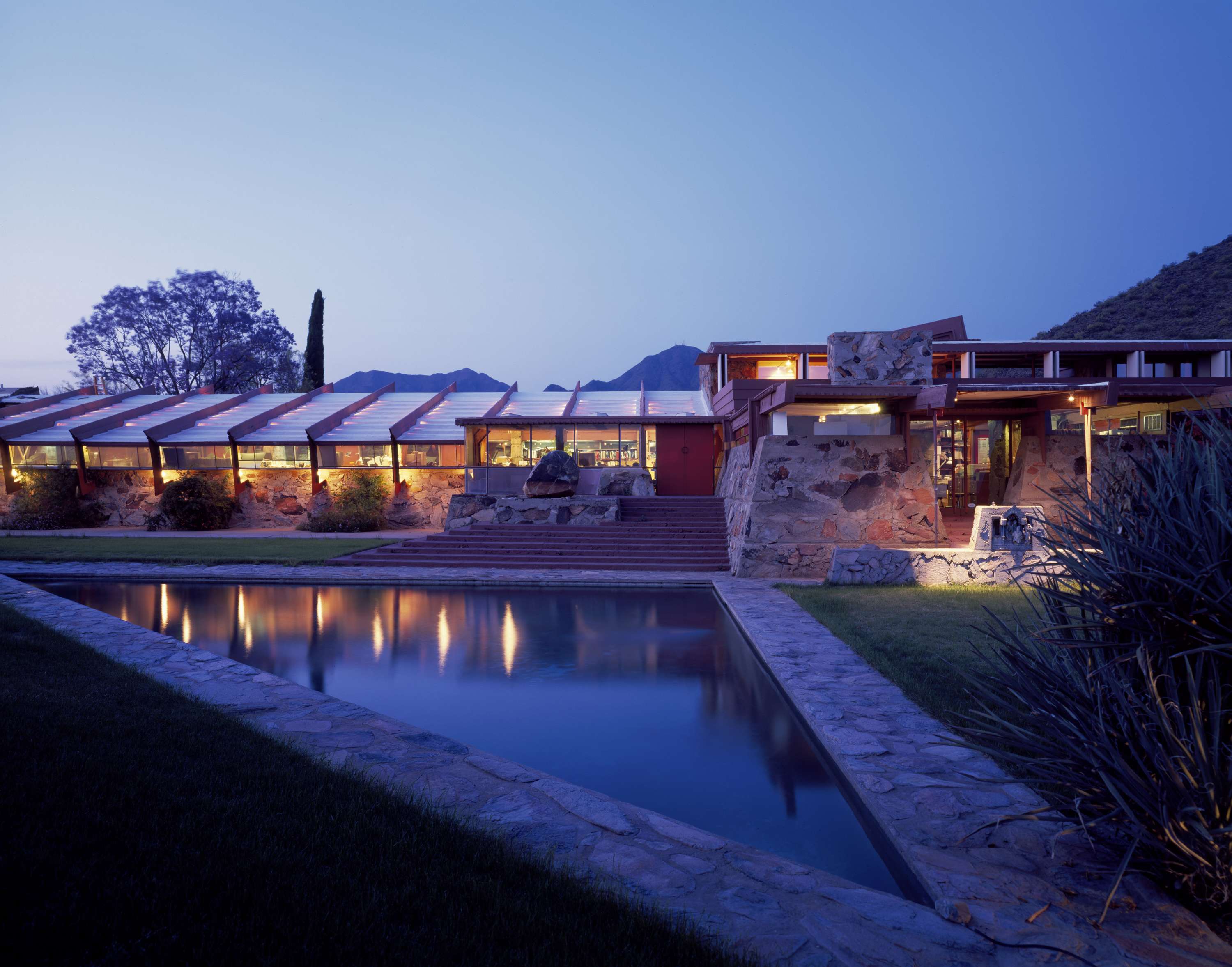
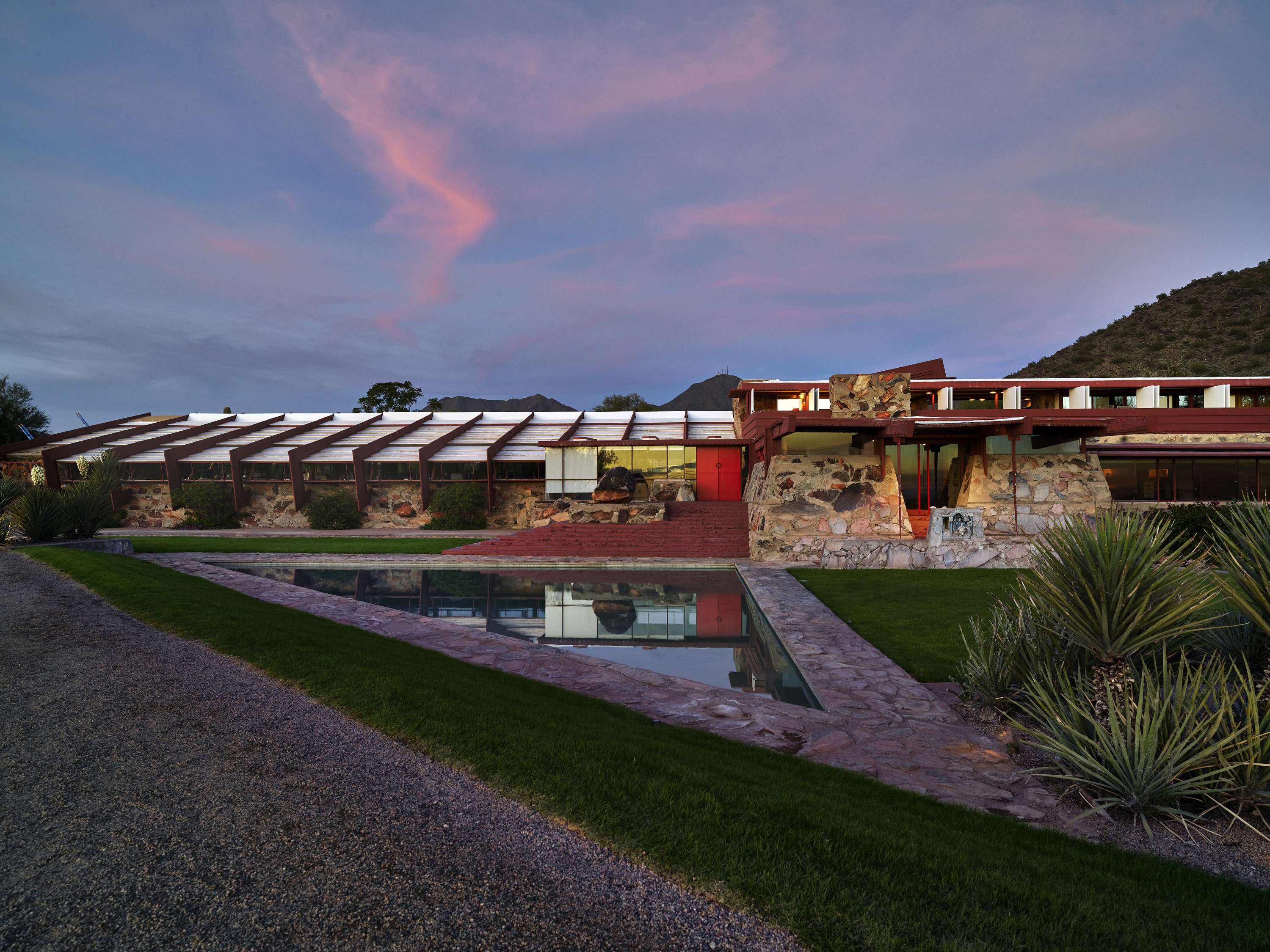
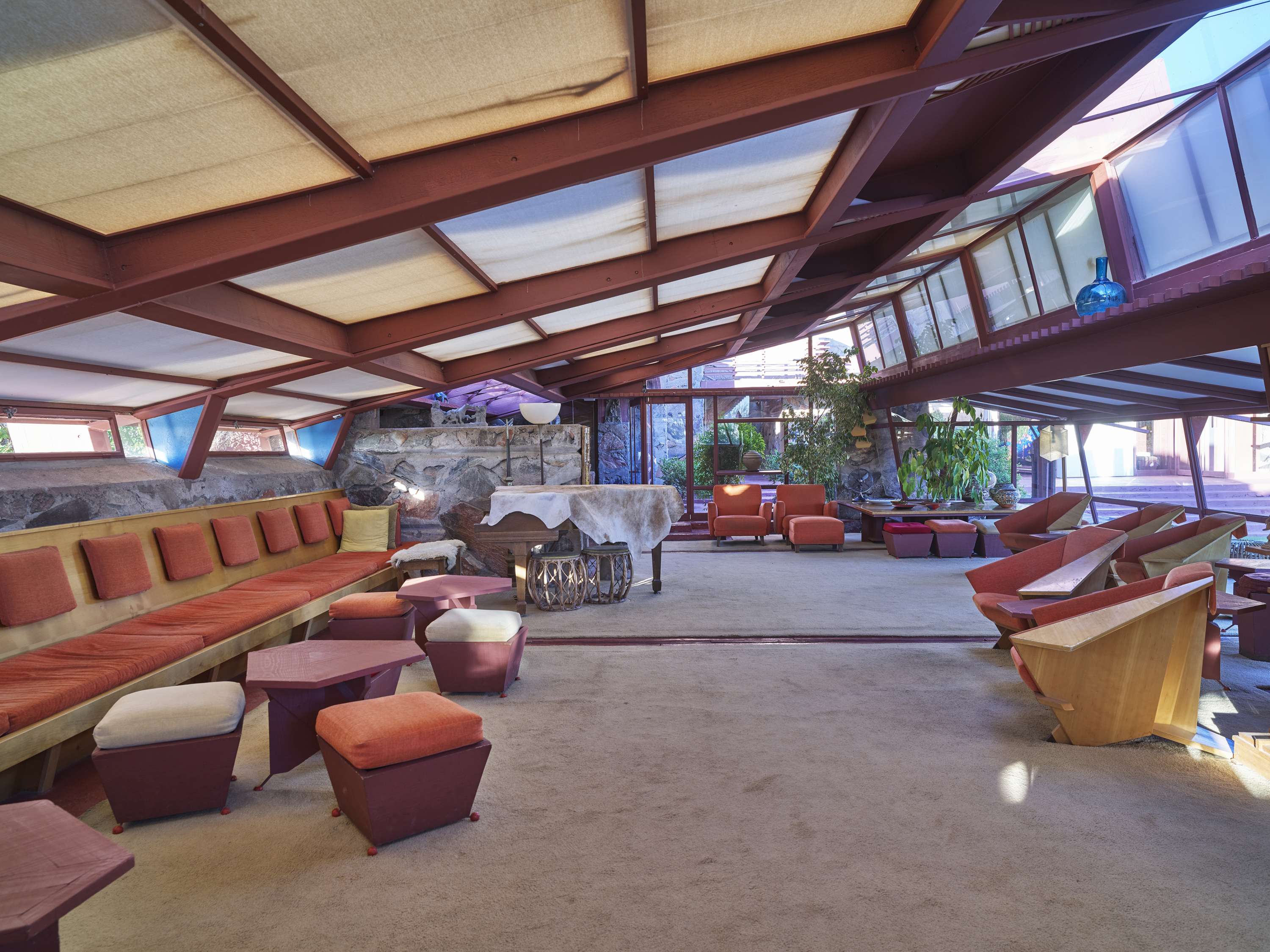
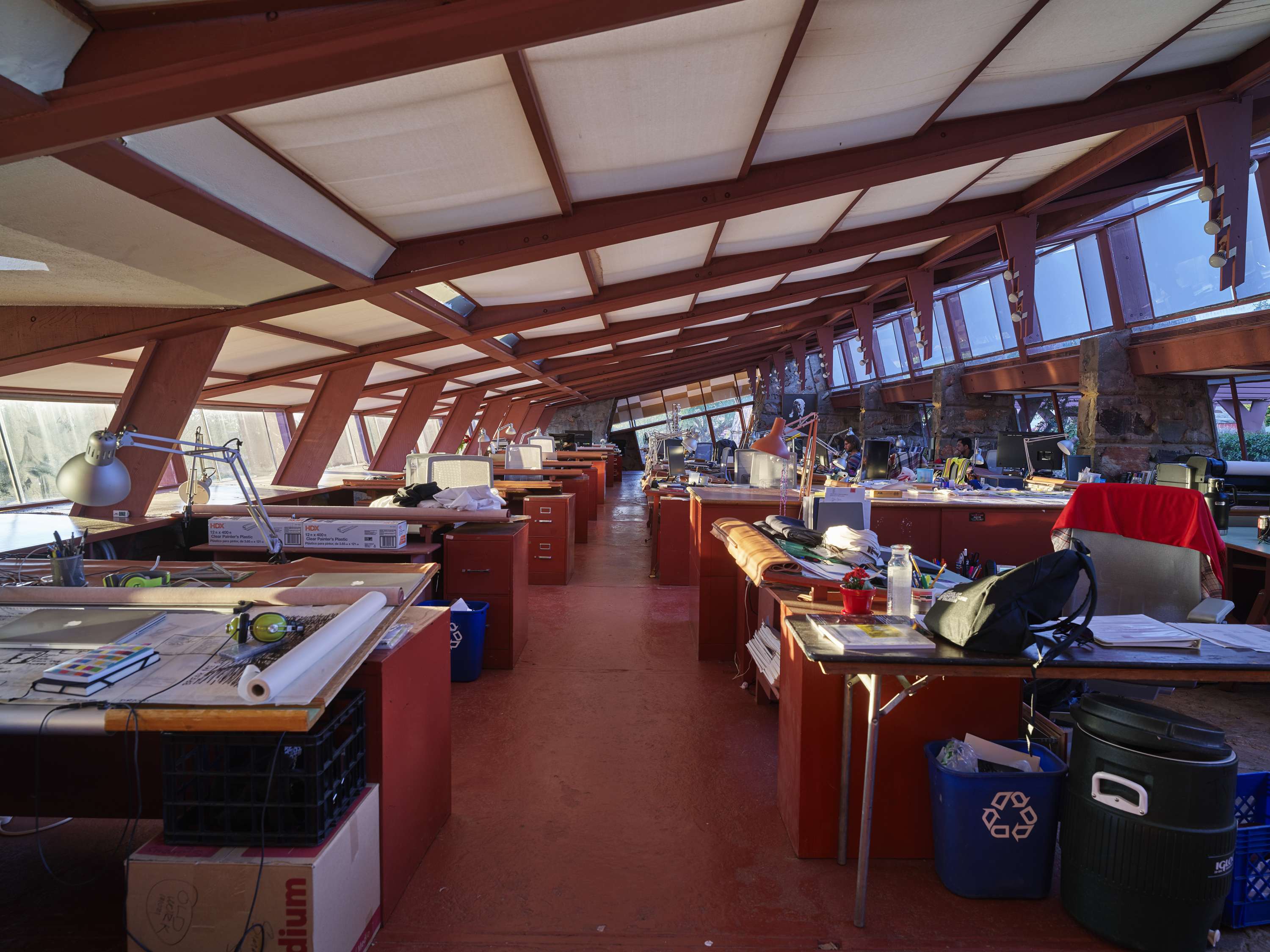
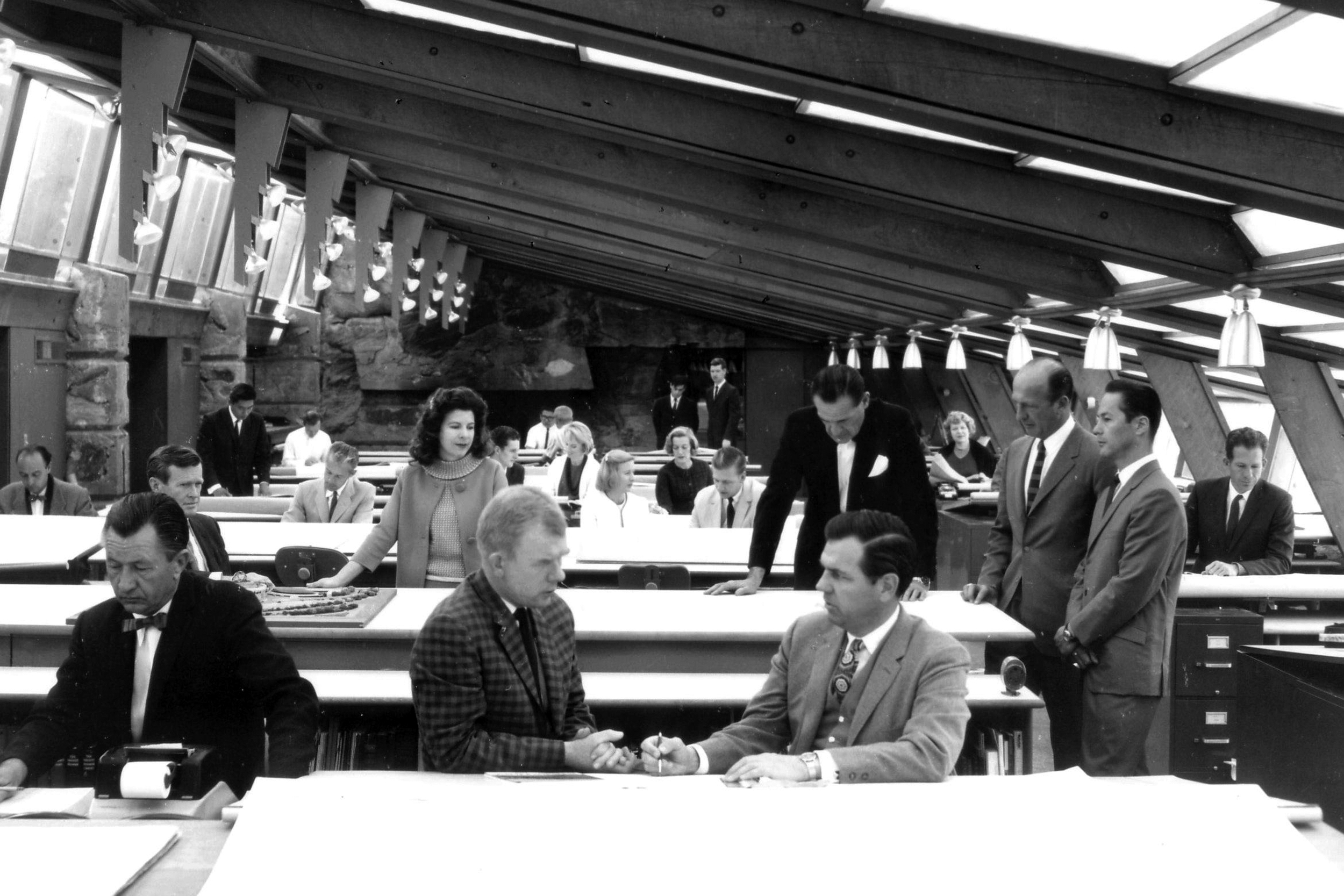
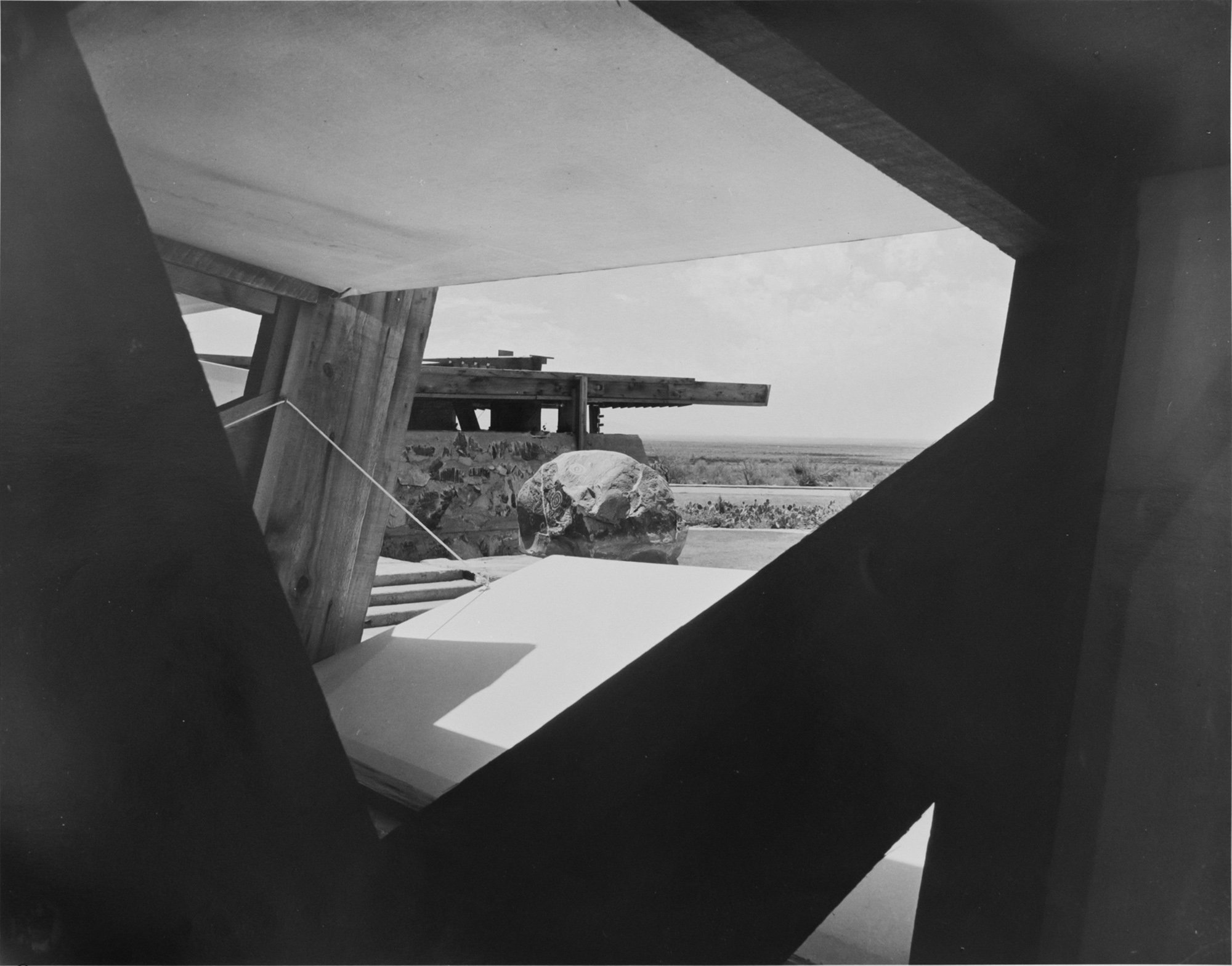
Lieu: Scottsdale AZ, USA
Type: Atelier, Auditorium, Bureaux, École, Maison
Area: 620 acres (250 ha)
Drawings: University of Texas at San Antonio, College of Architecture, Construction and Planning
Text: Wikipedia
Photography: Carol M. Highsmith (LOC) - G. E. Kidder Smith (MIT Libraries) - Ezra Stoller - Pedro E. Guerrero
Publié: Juillet 2019
Catégorie: Architecture
Source